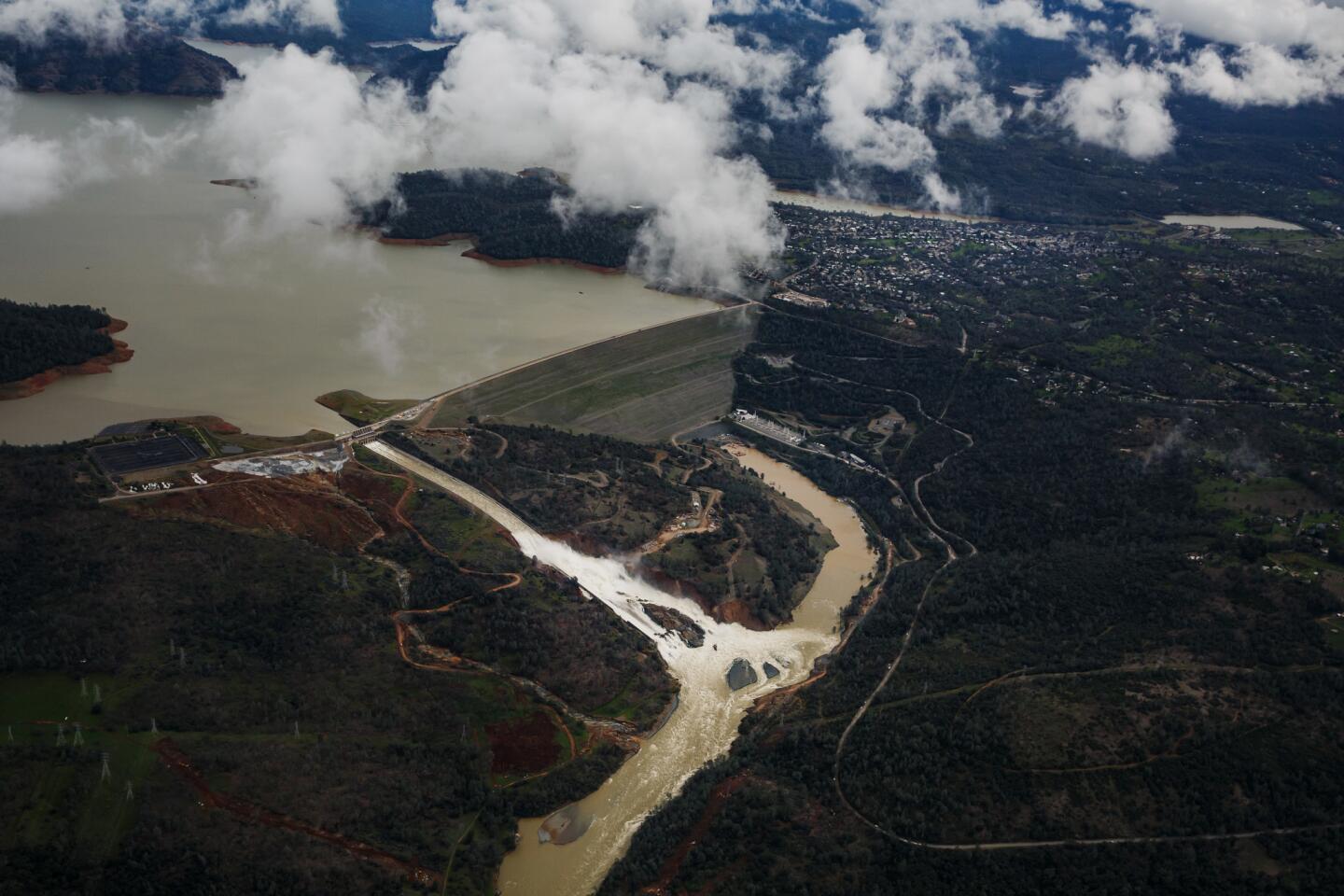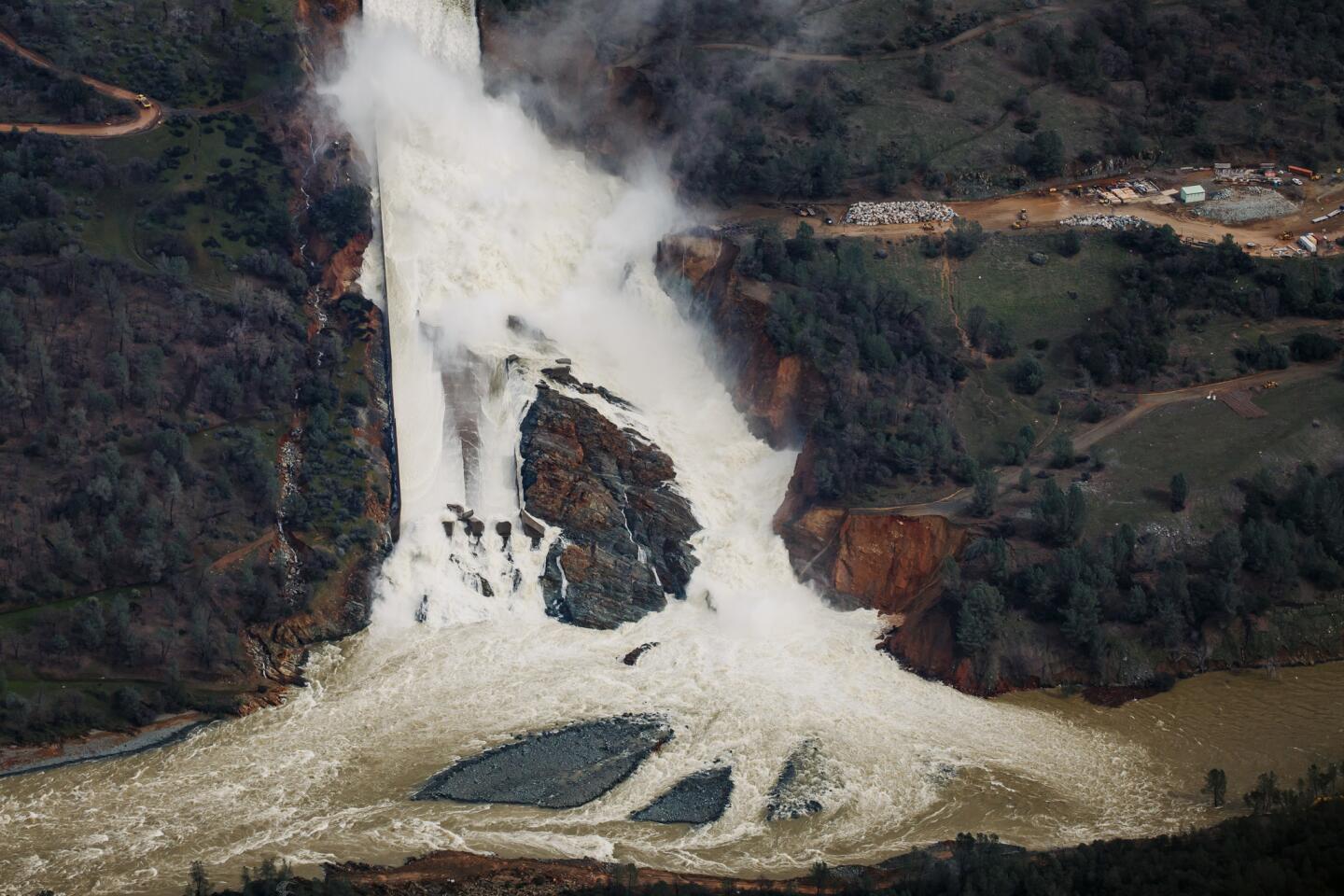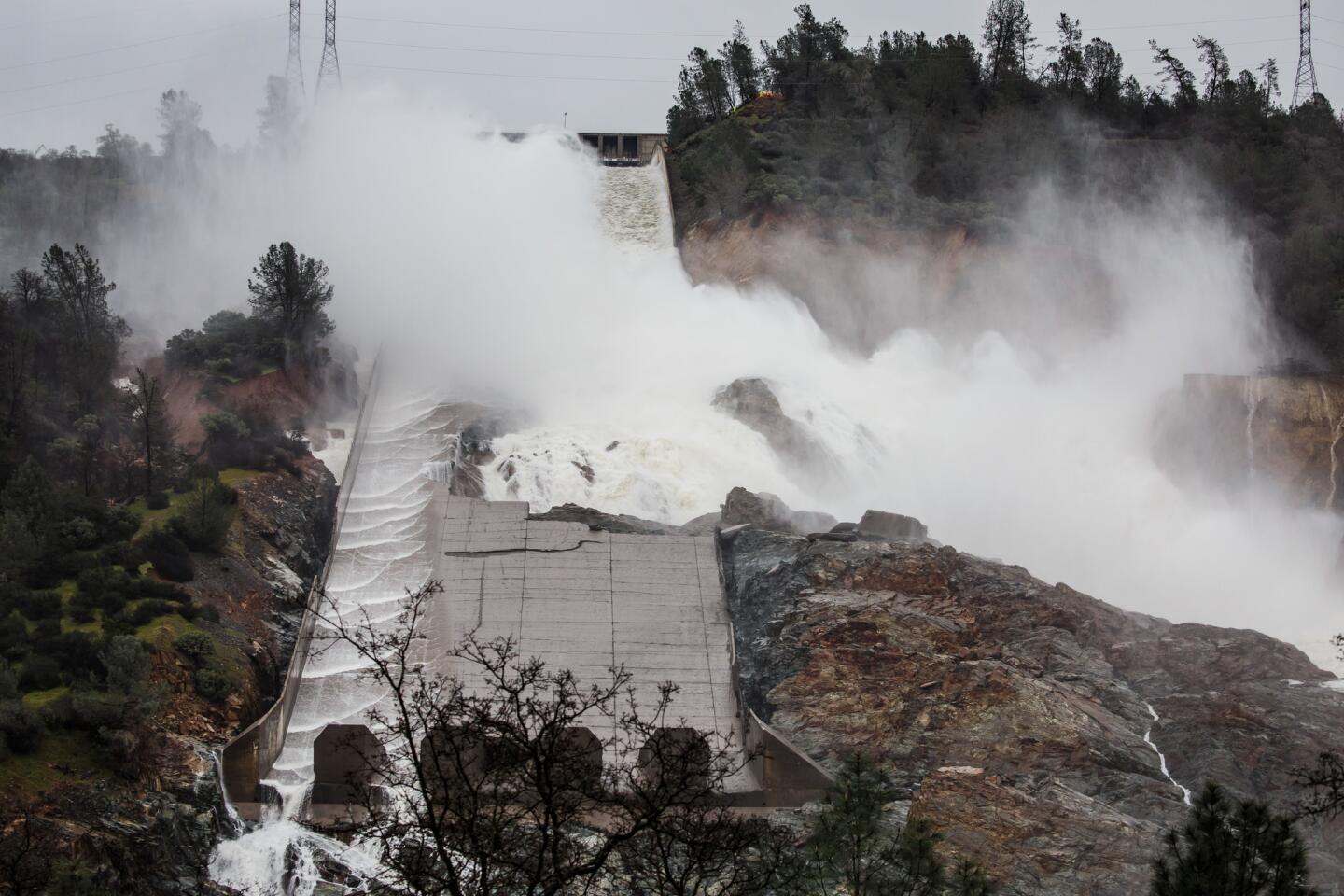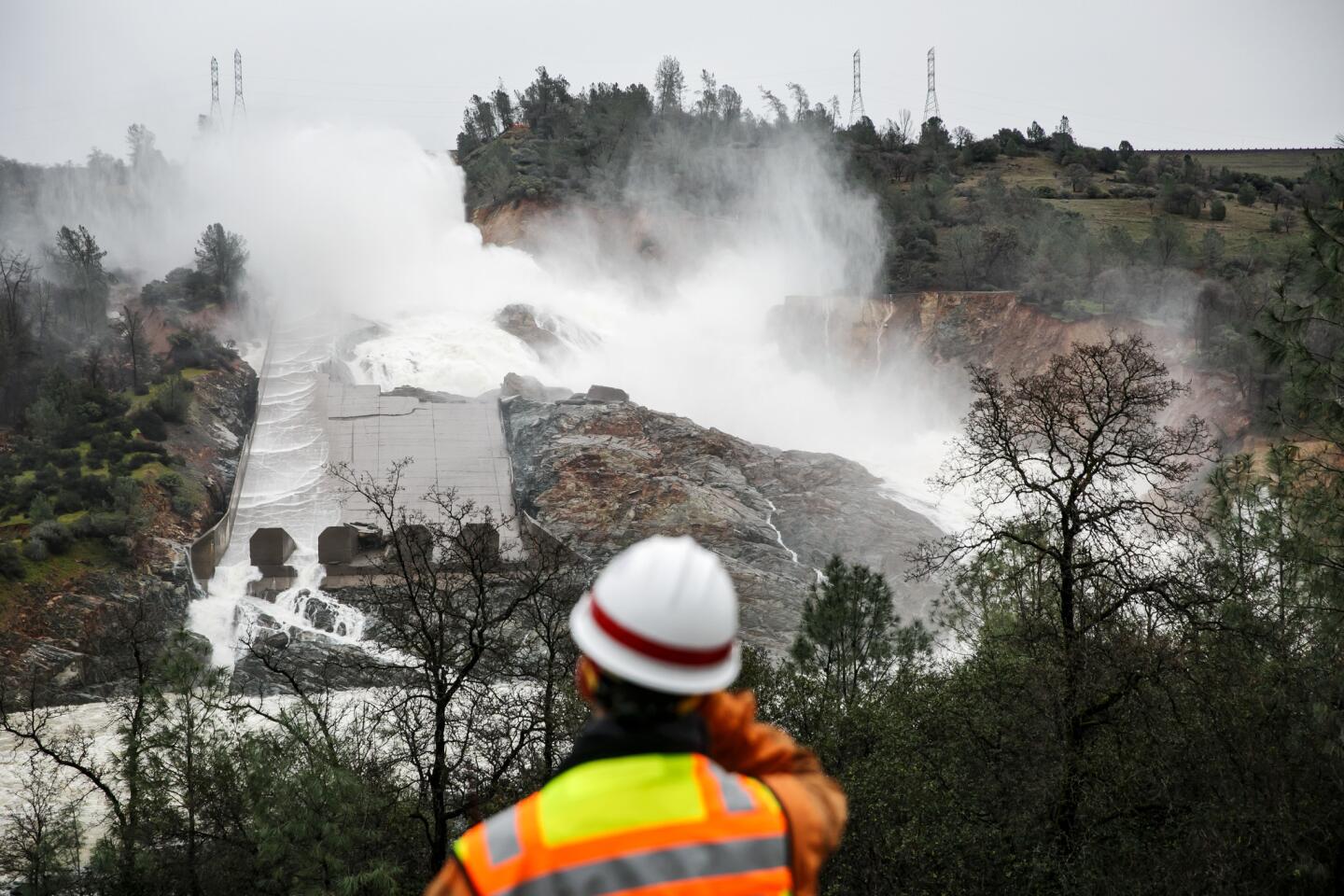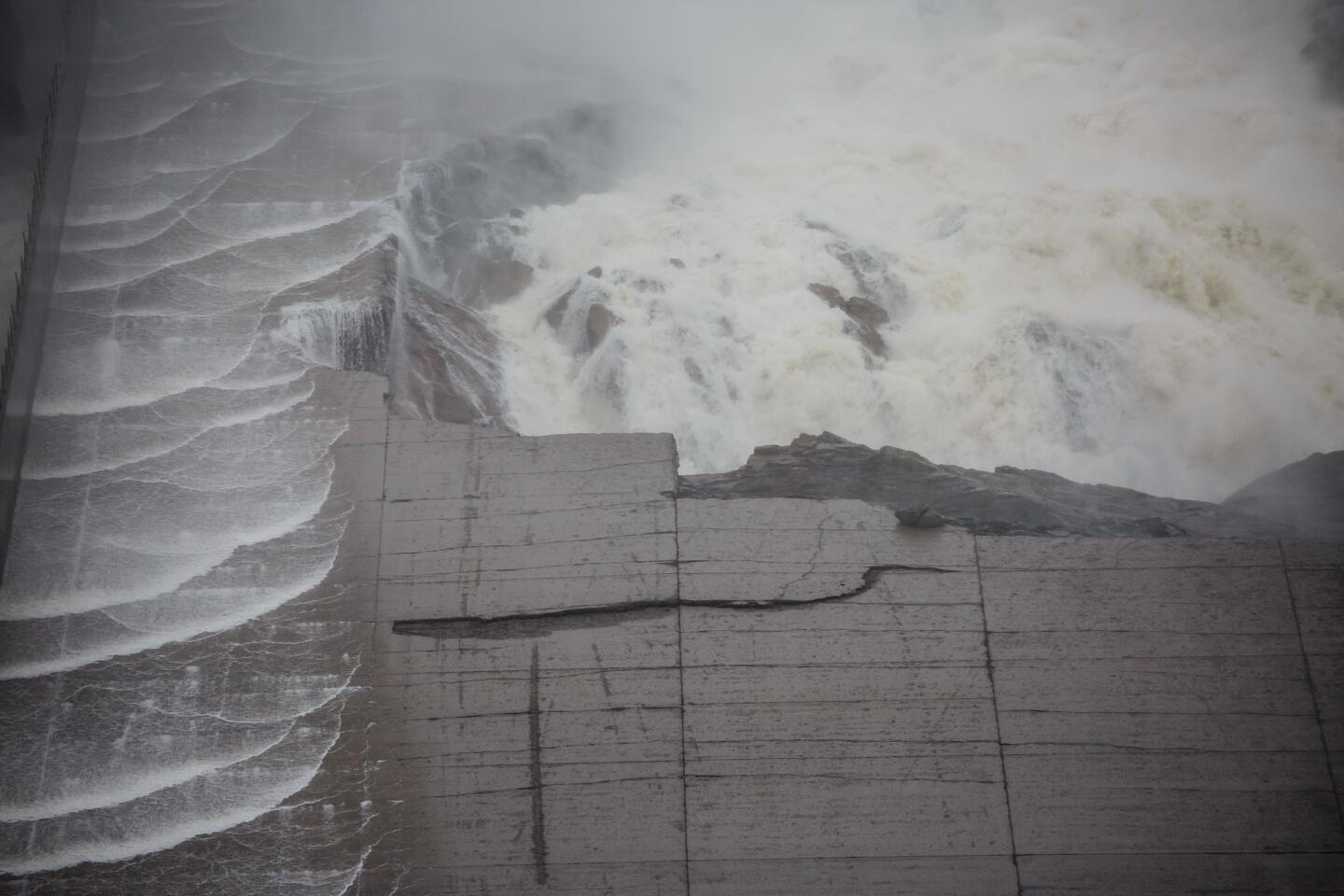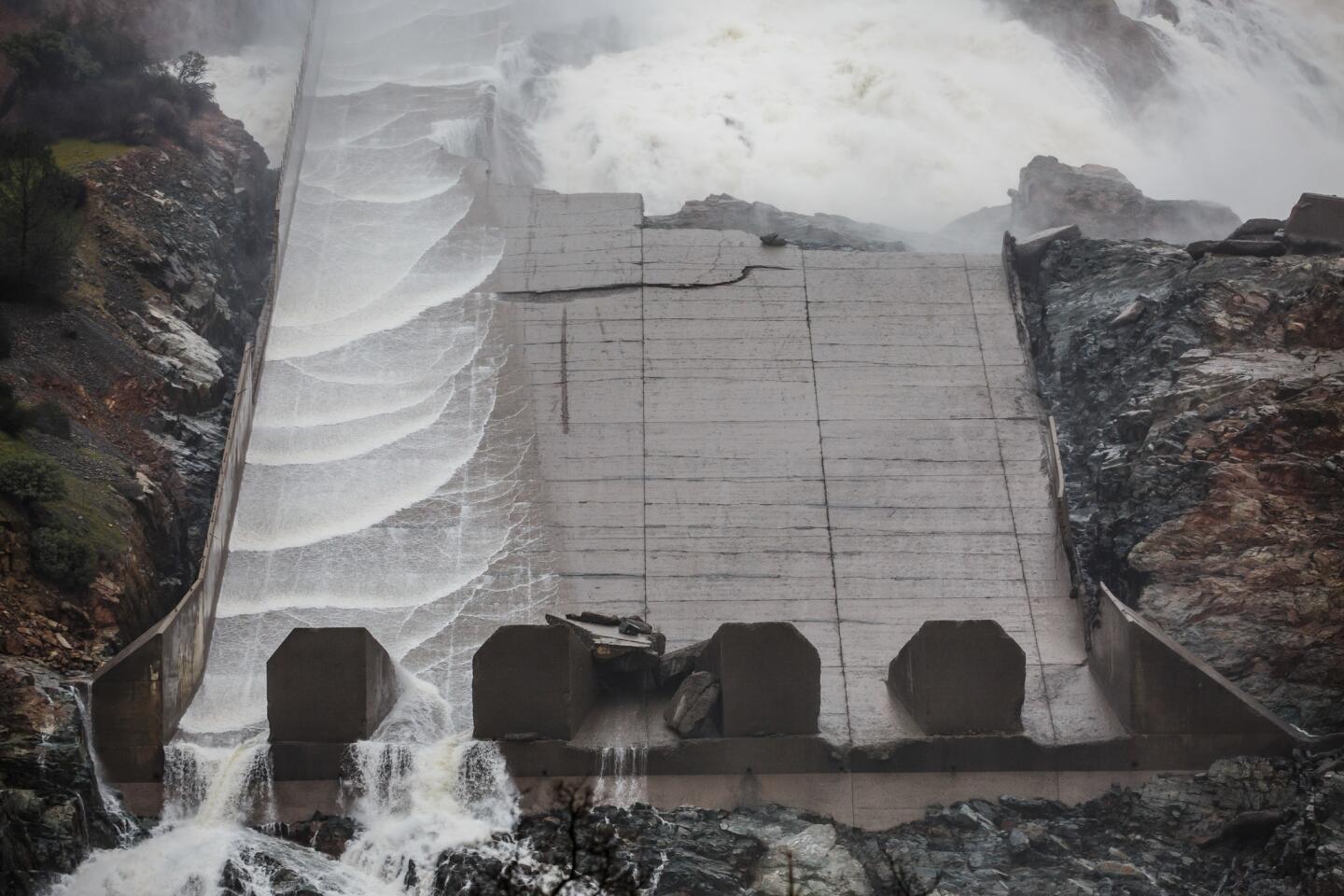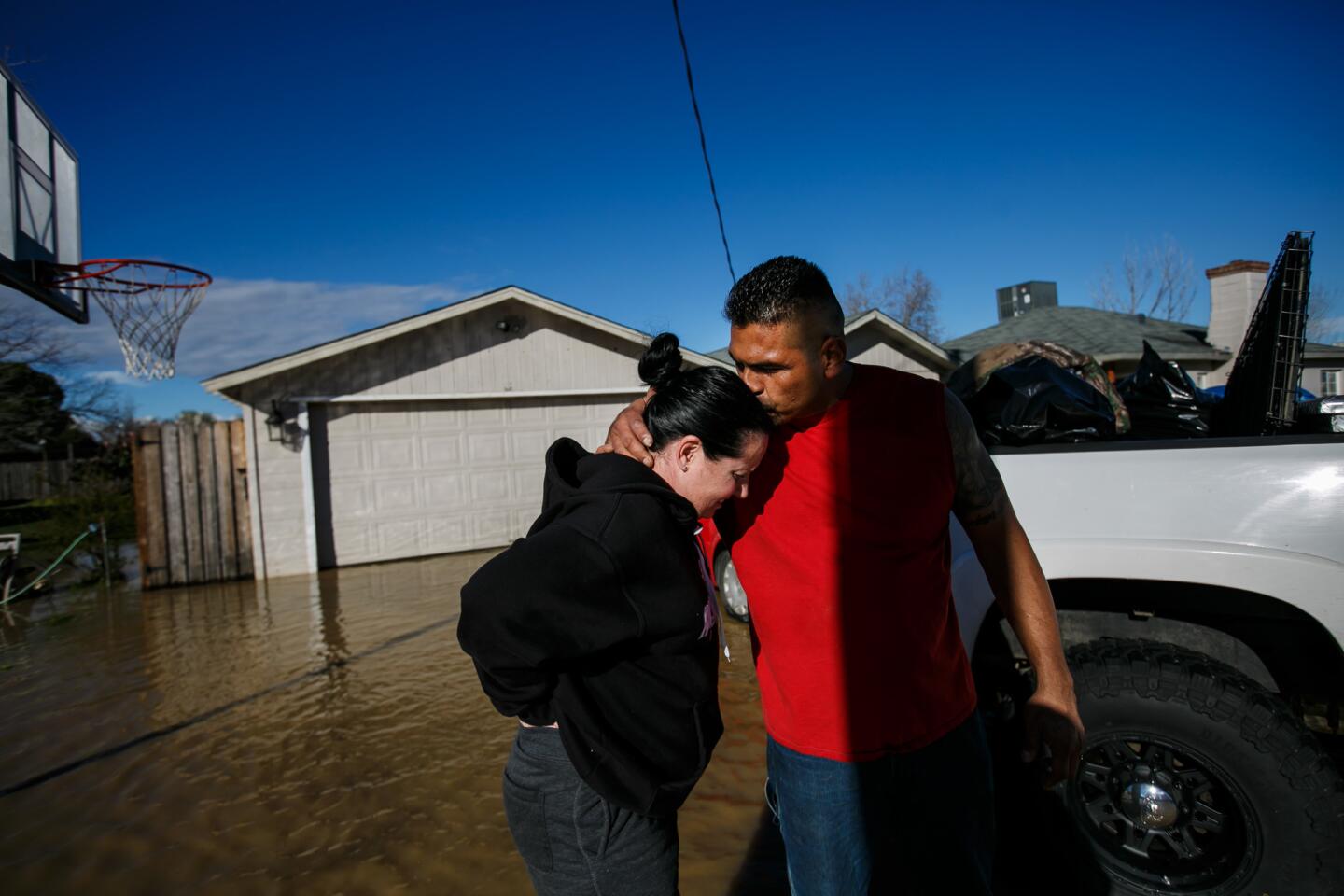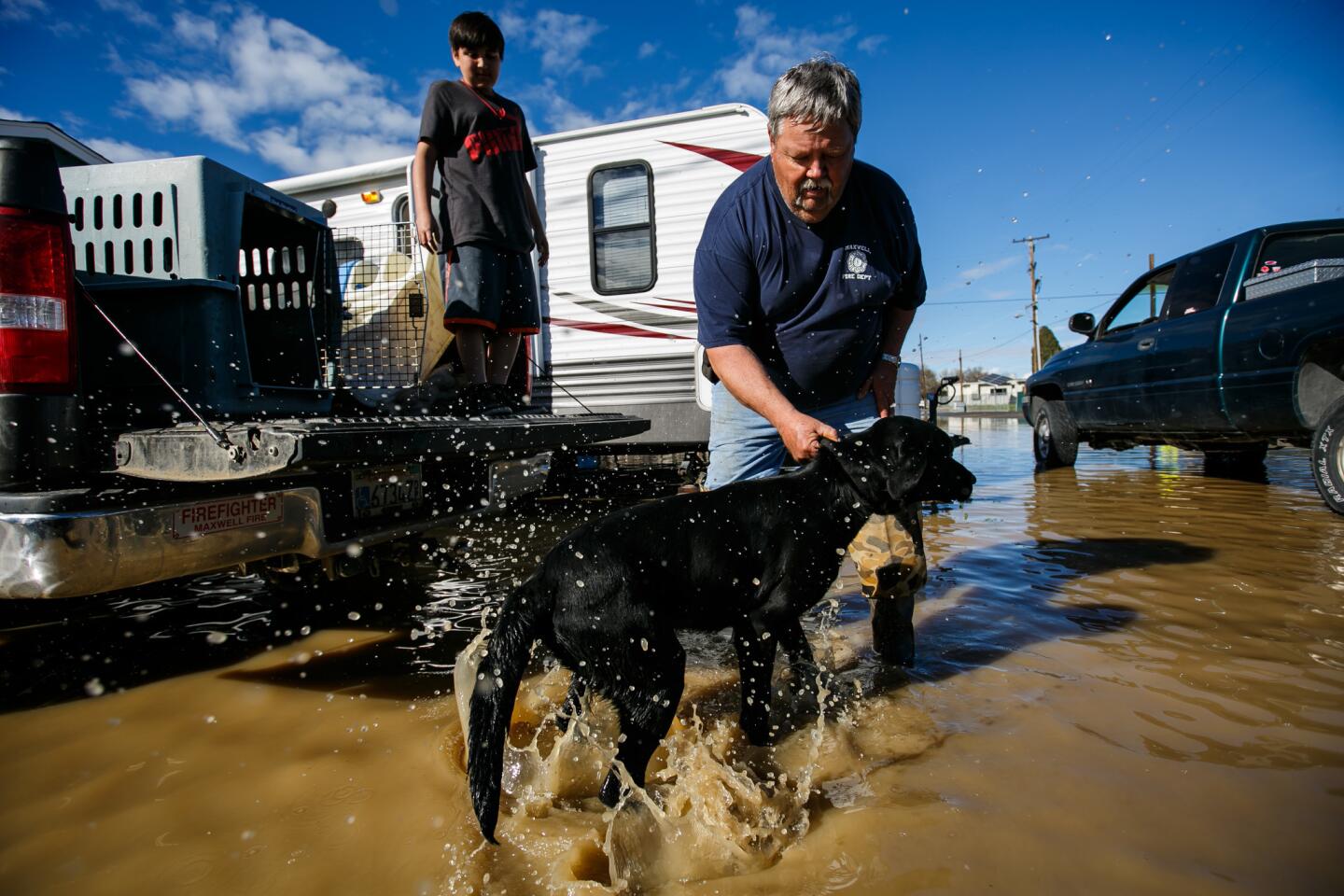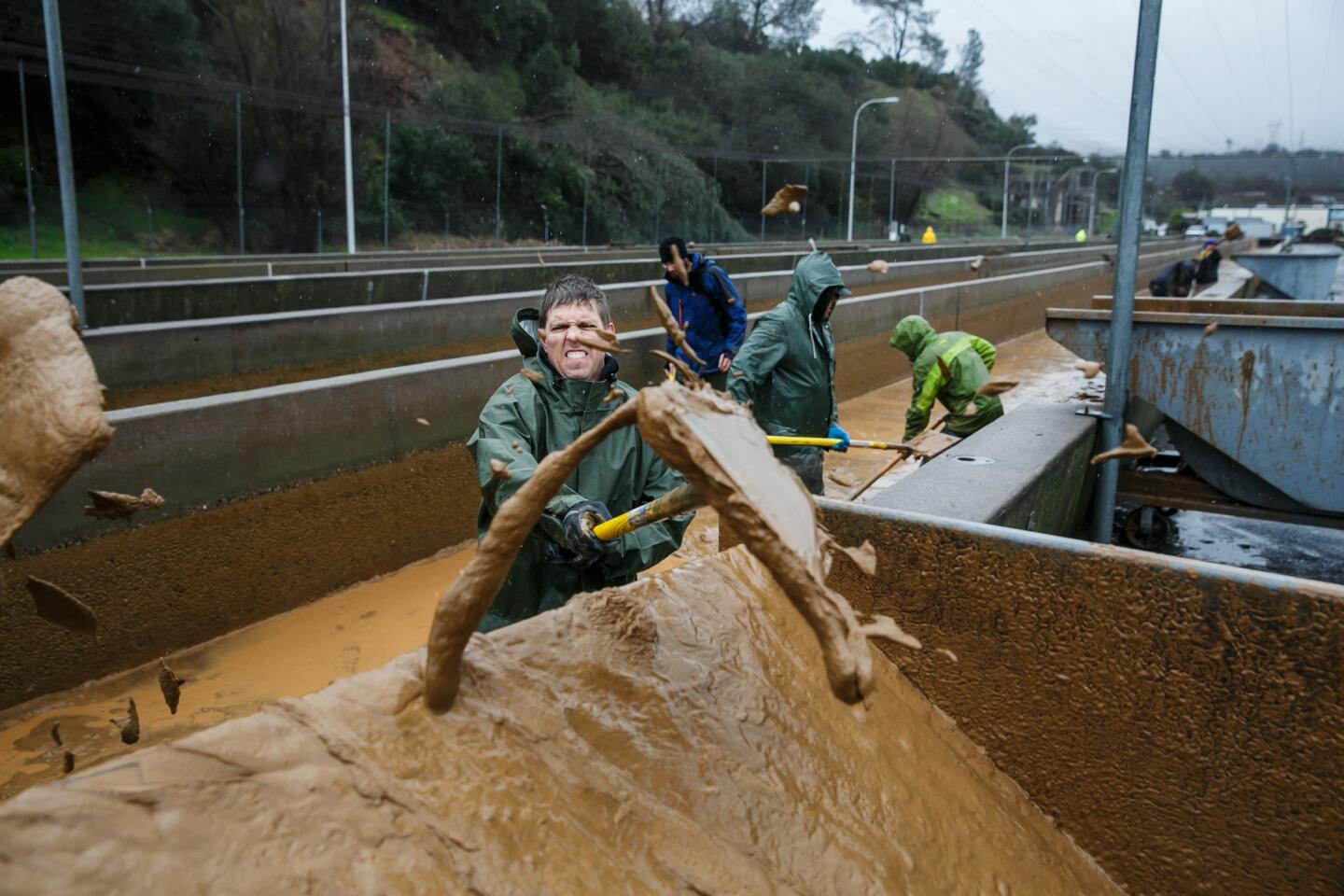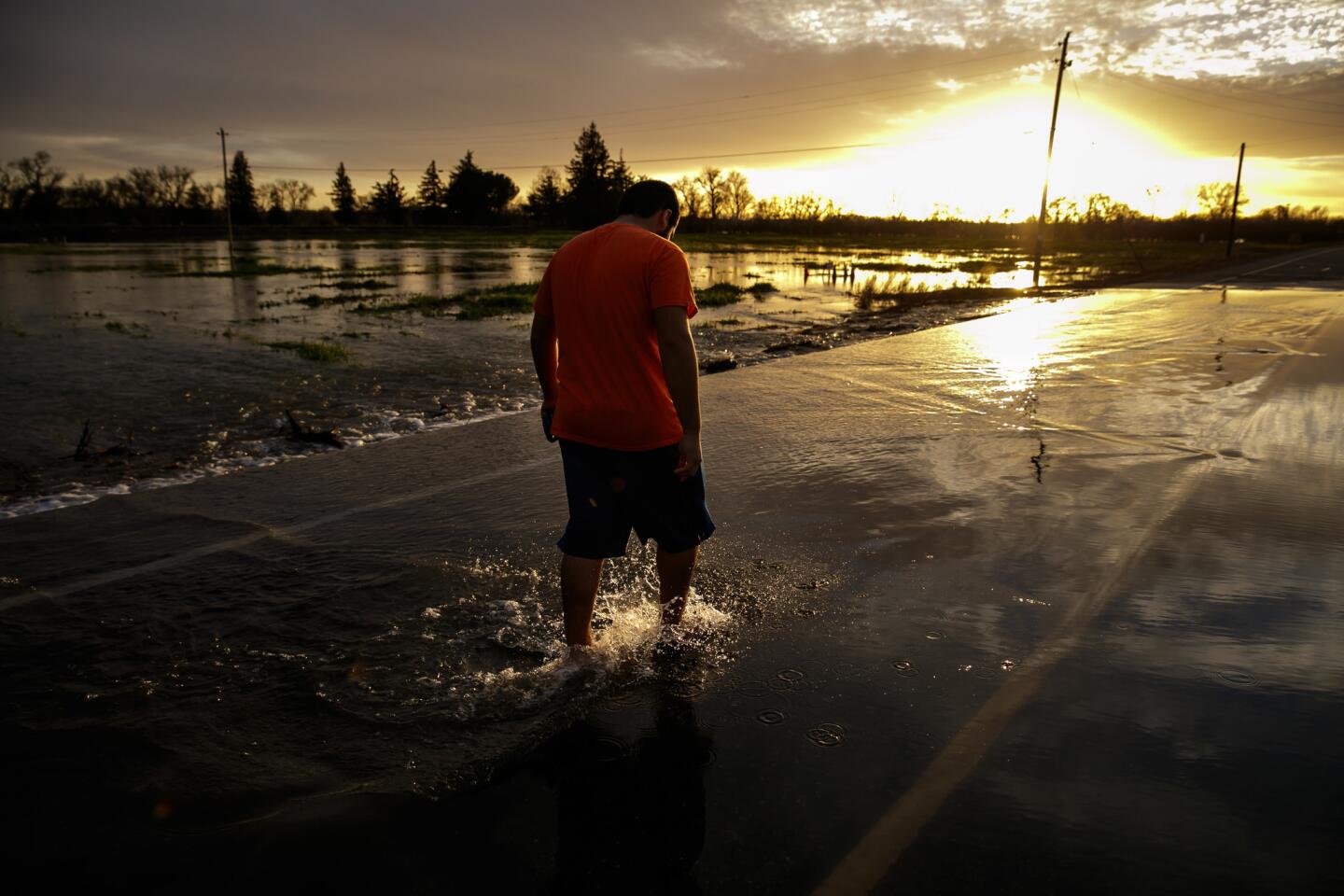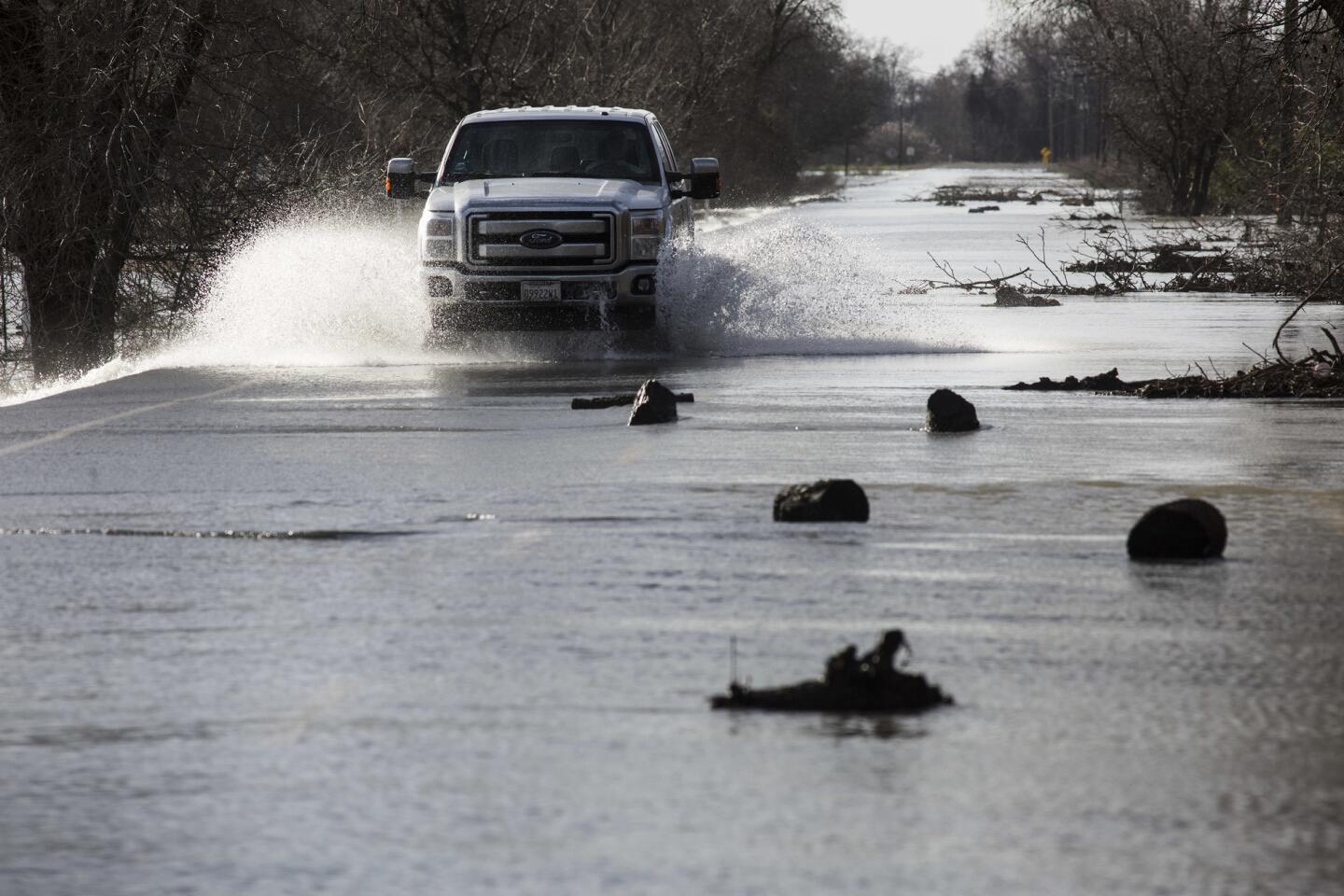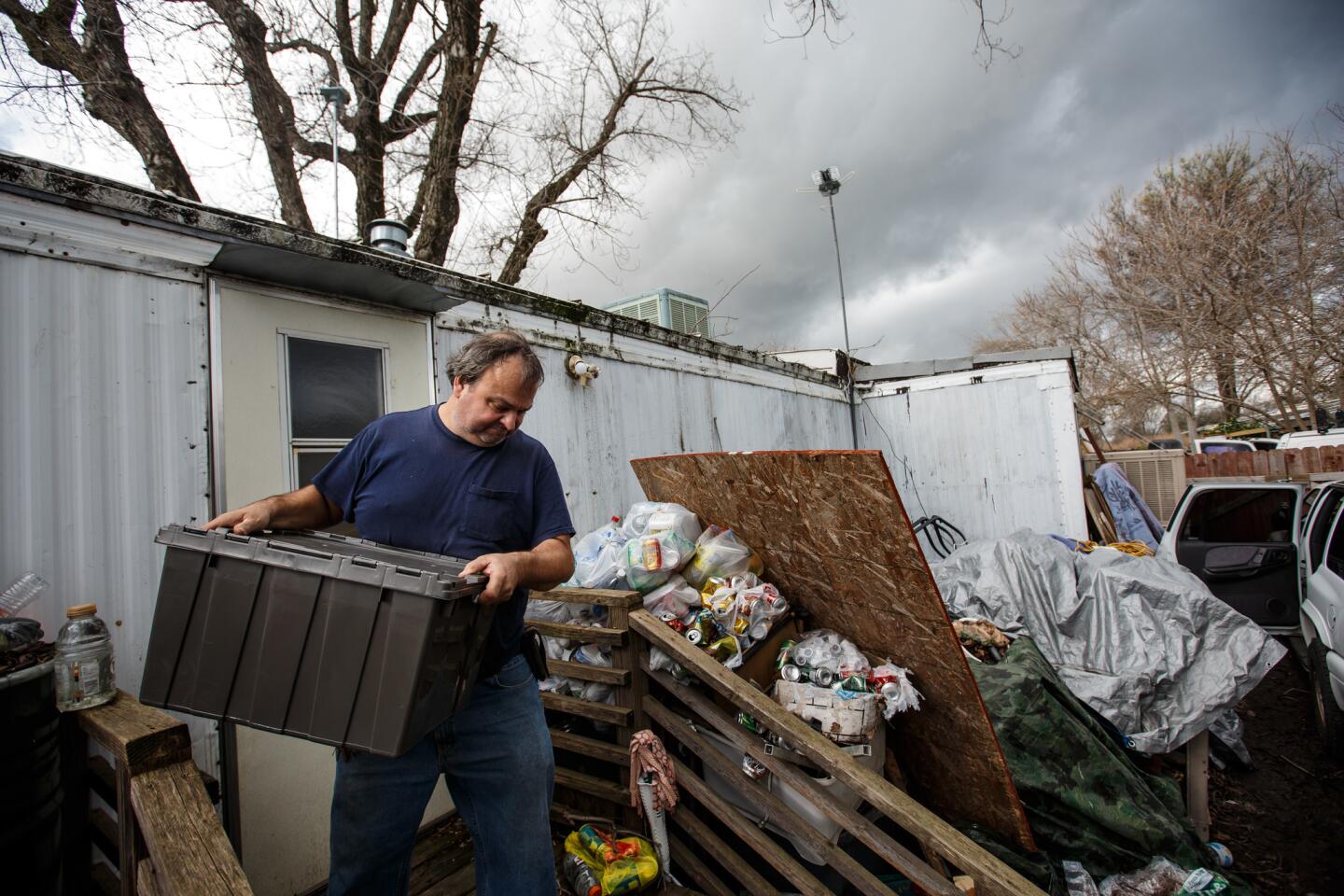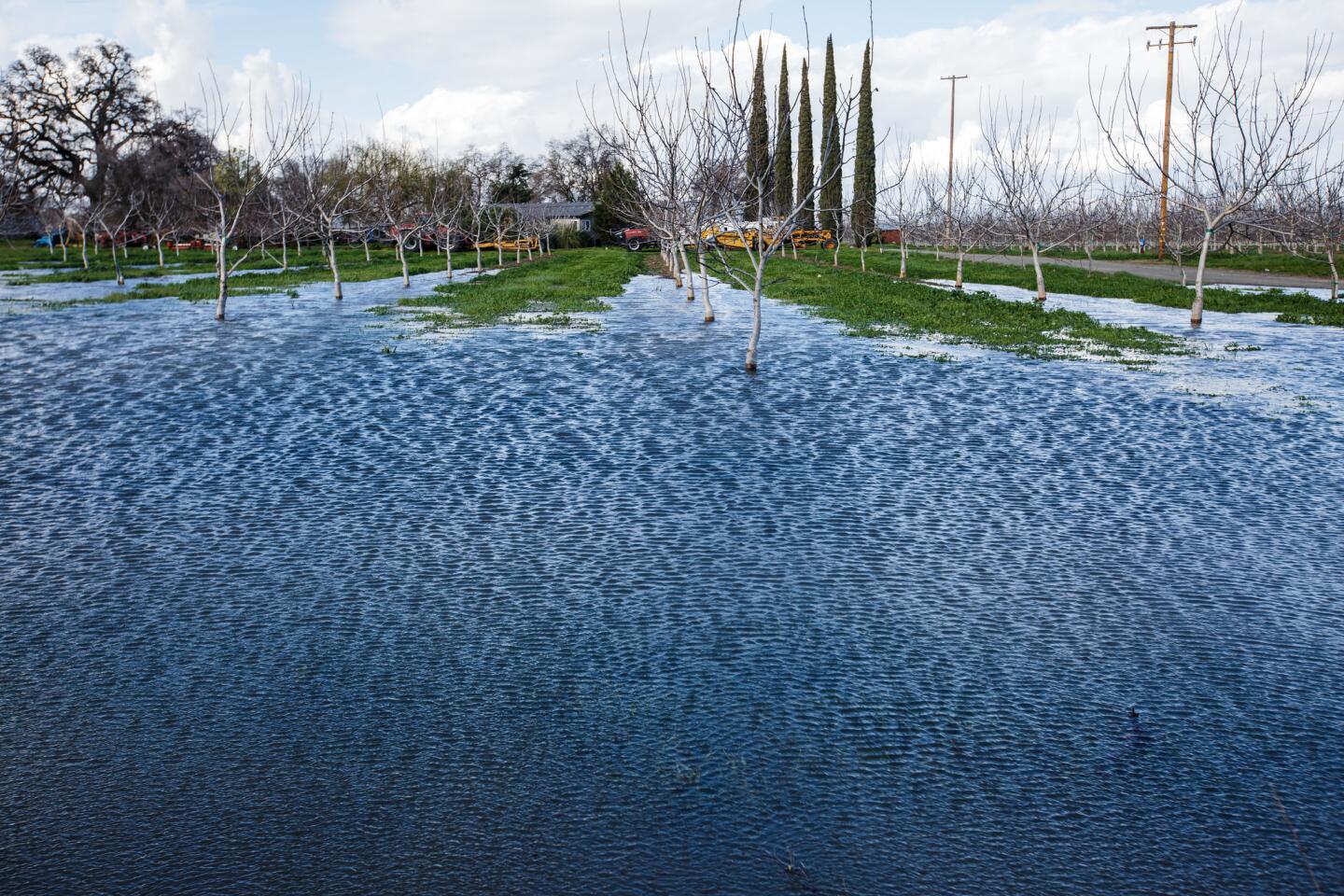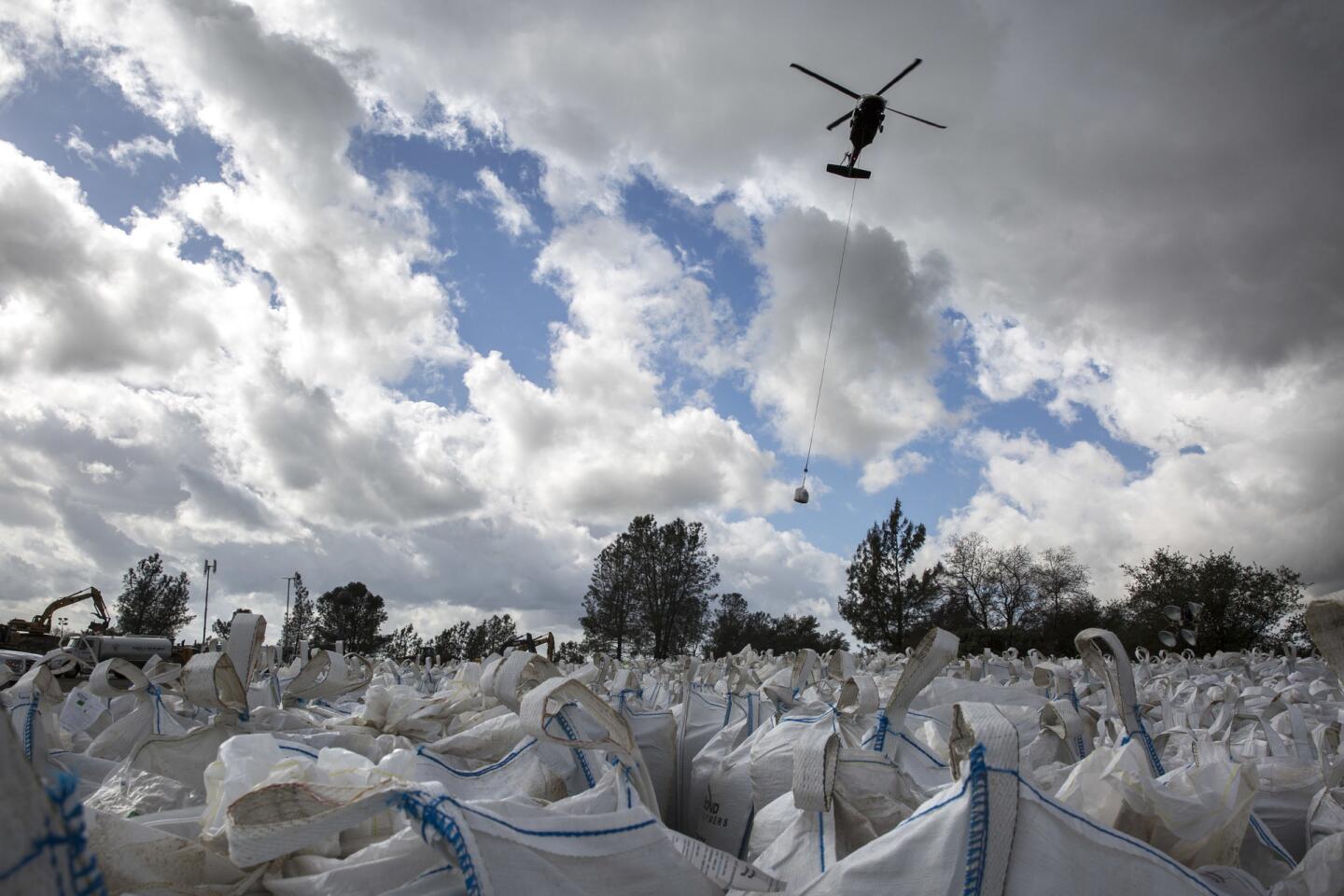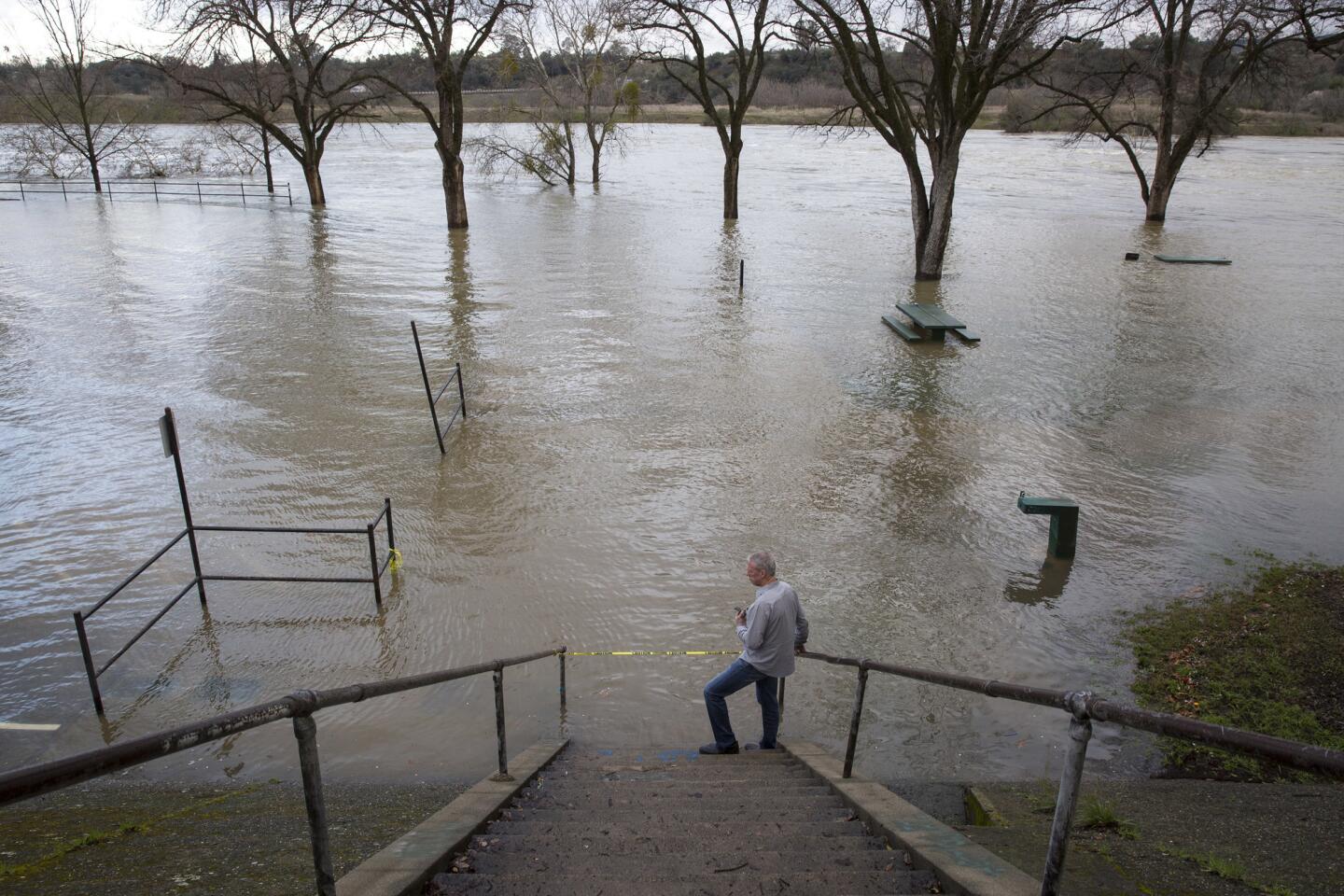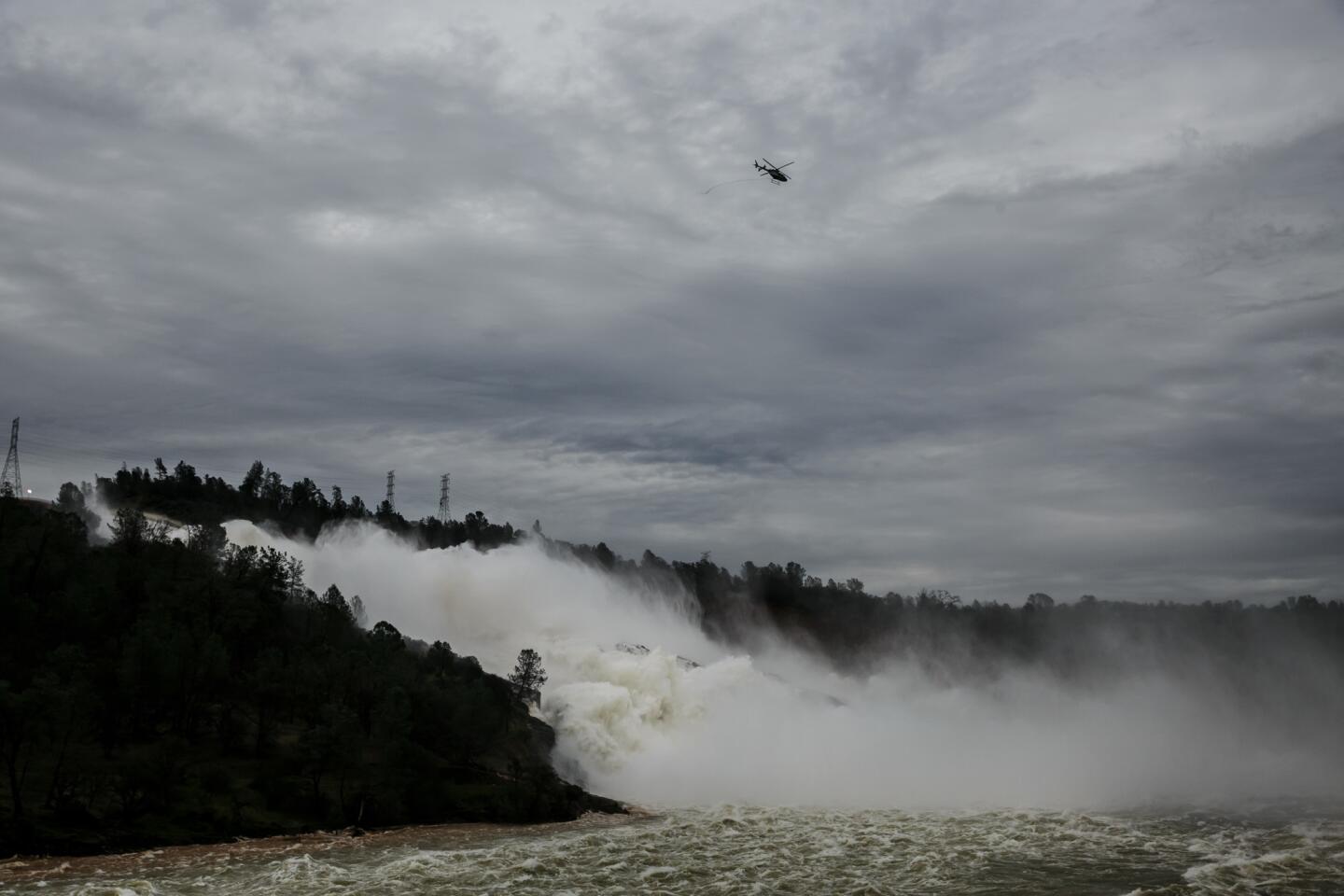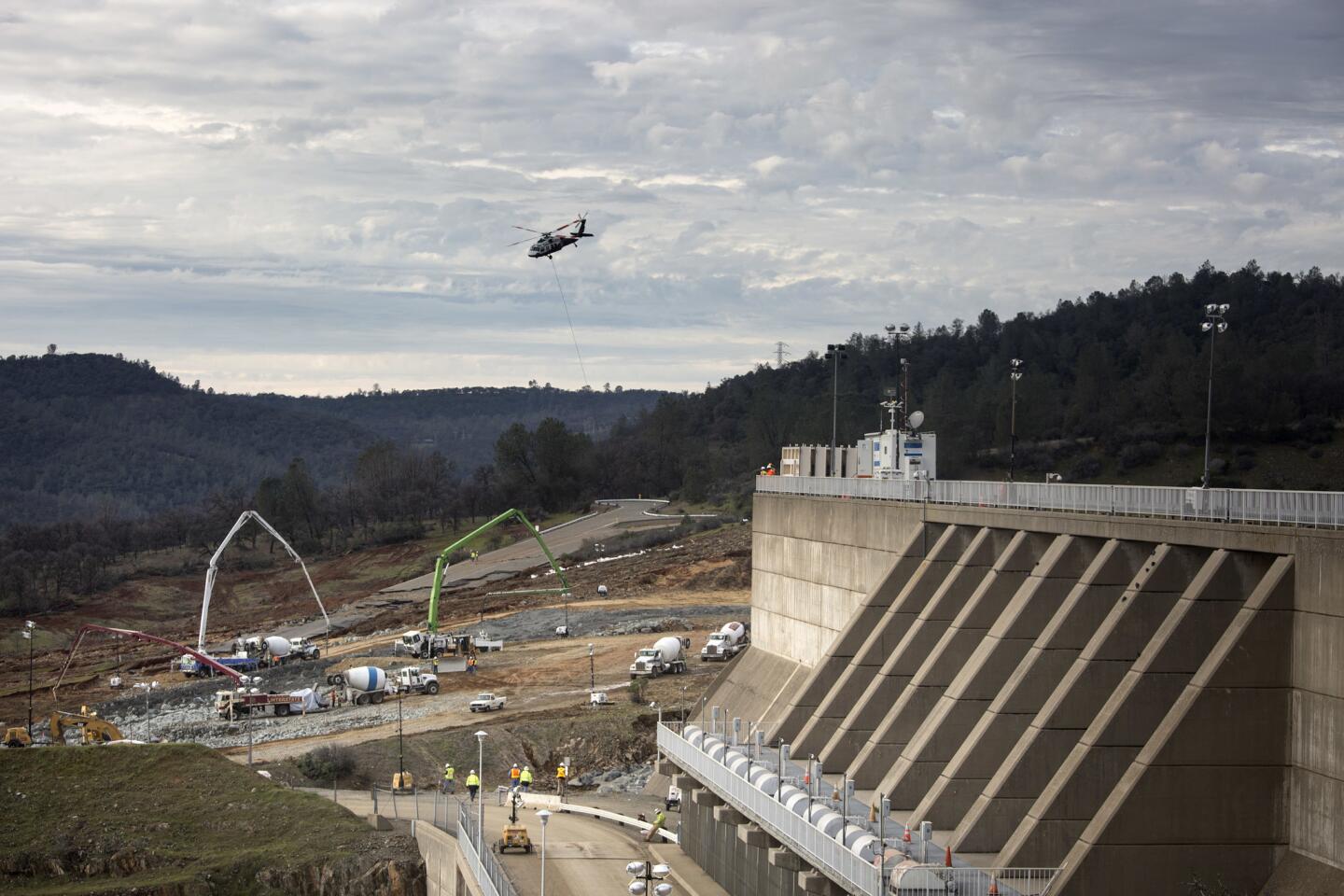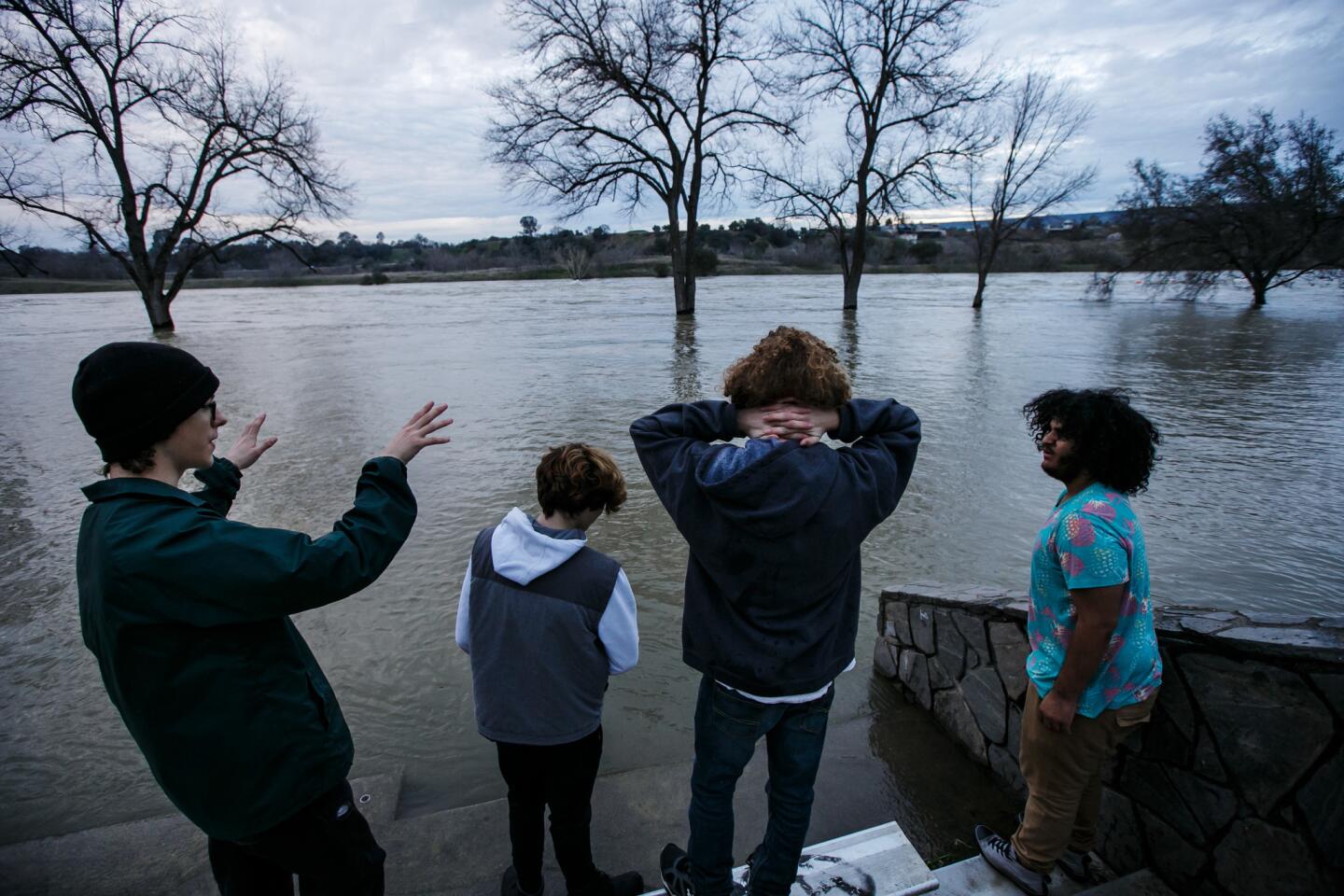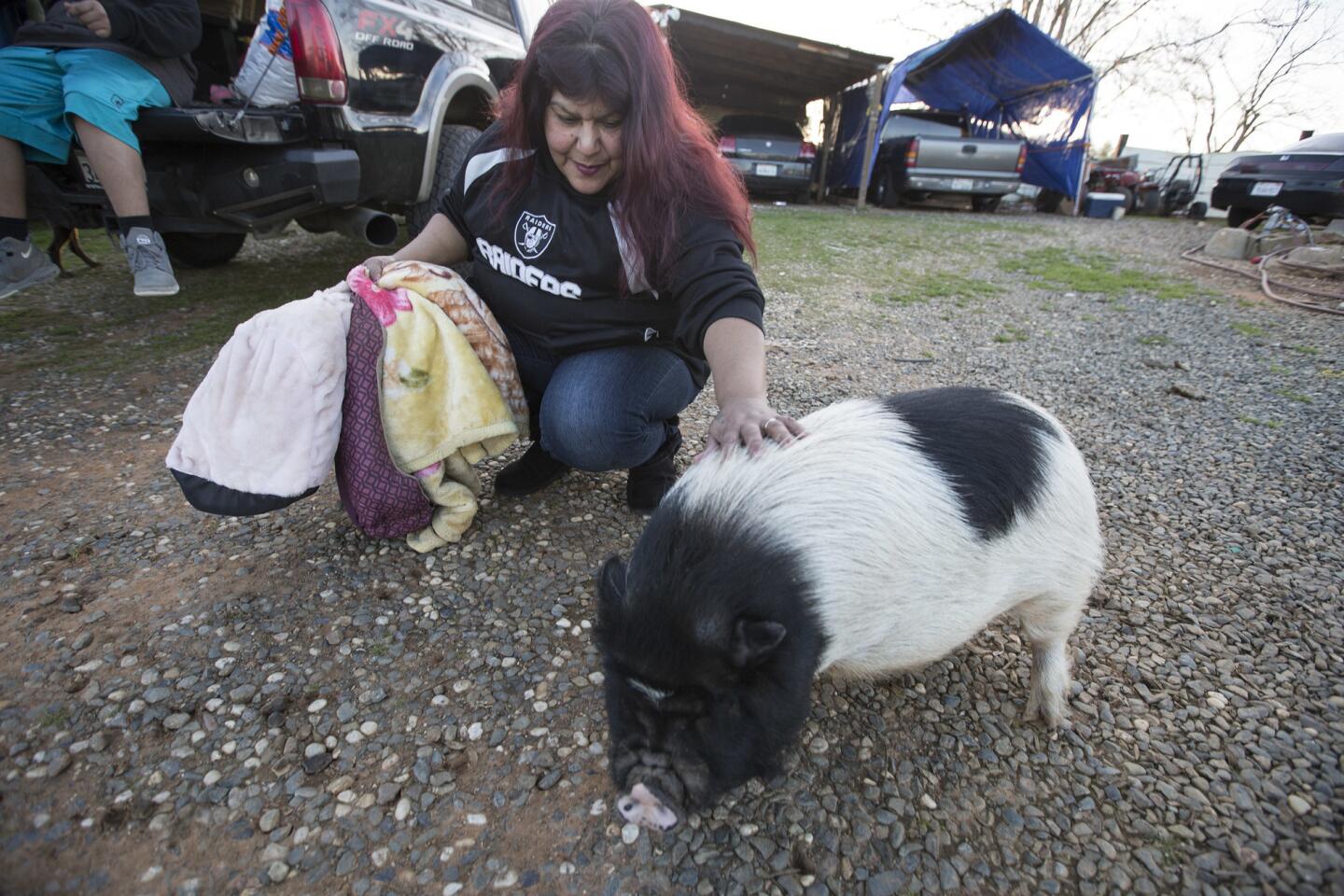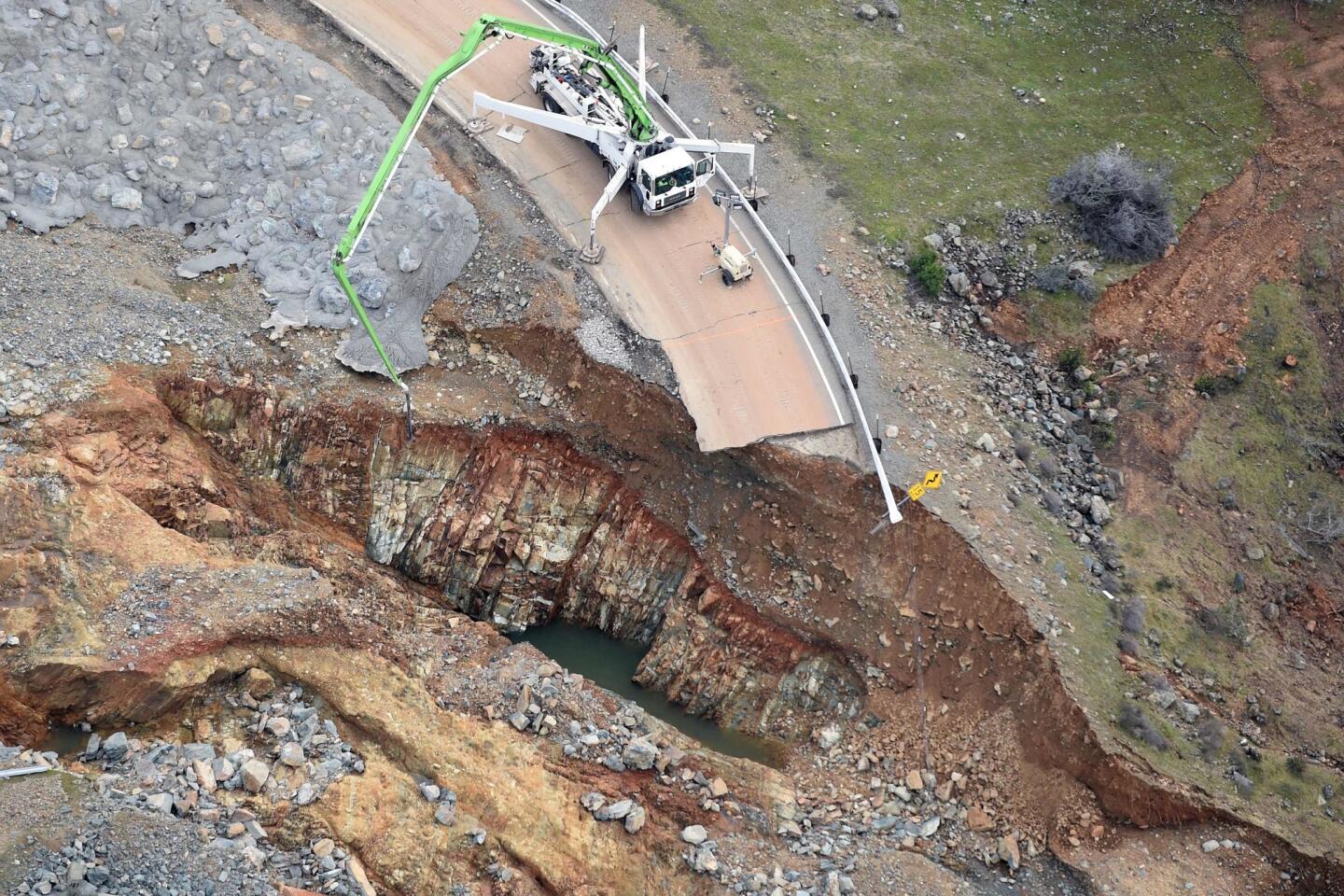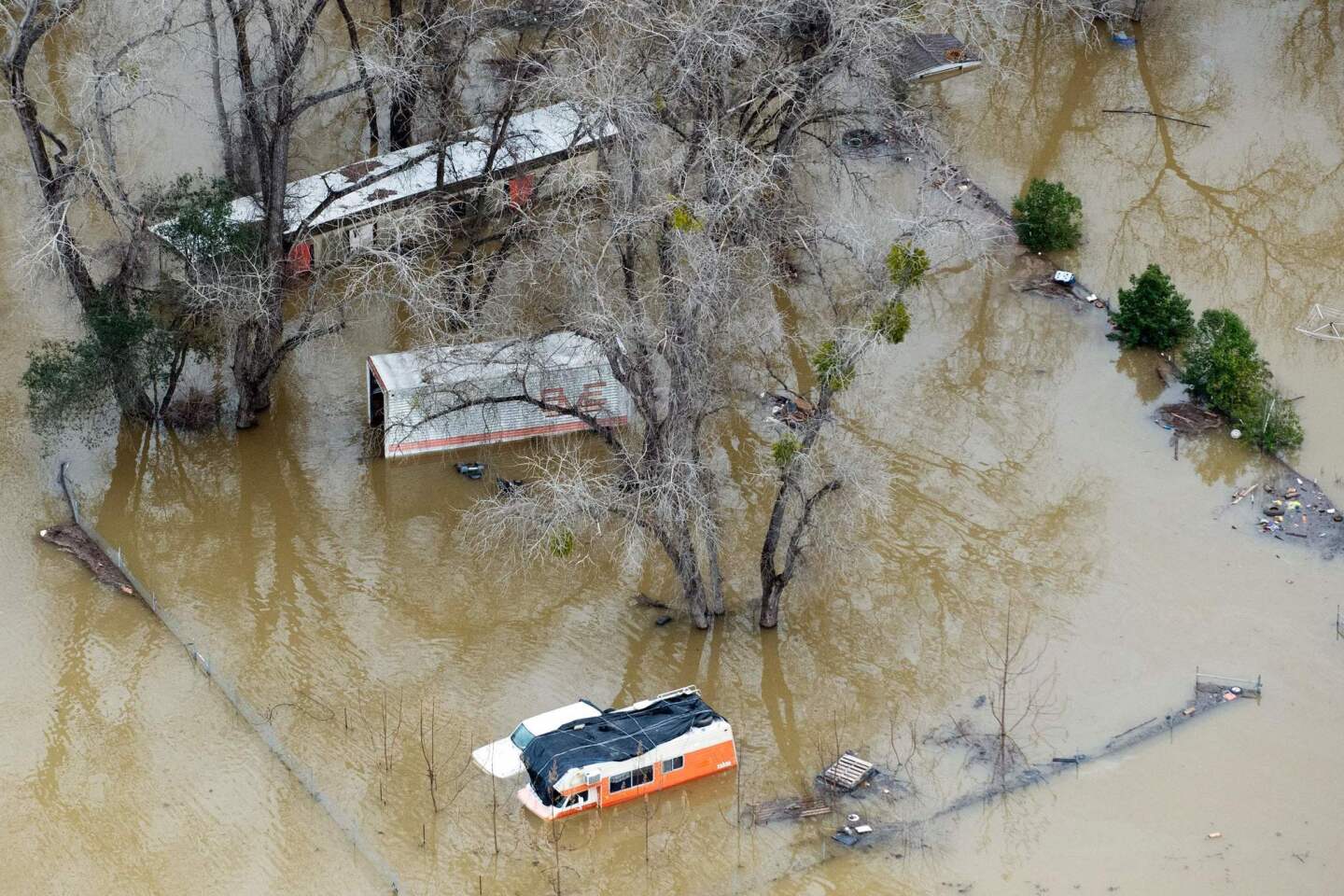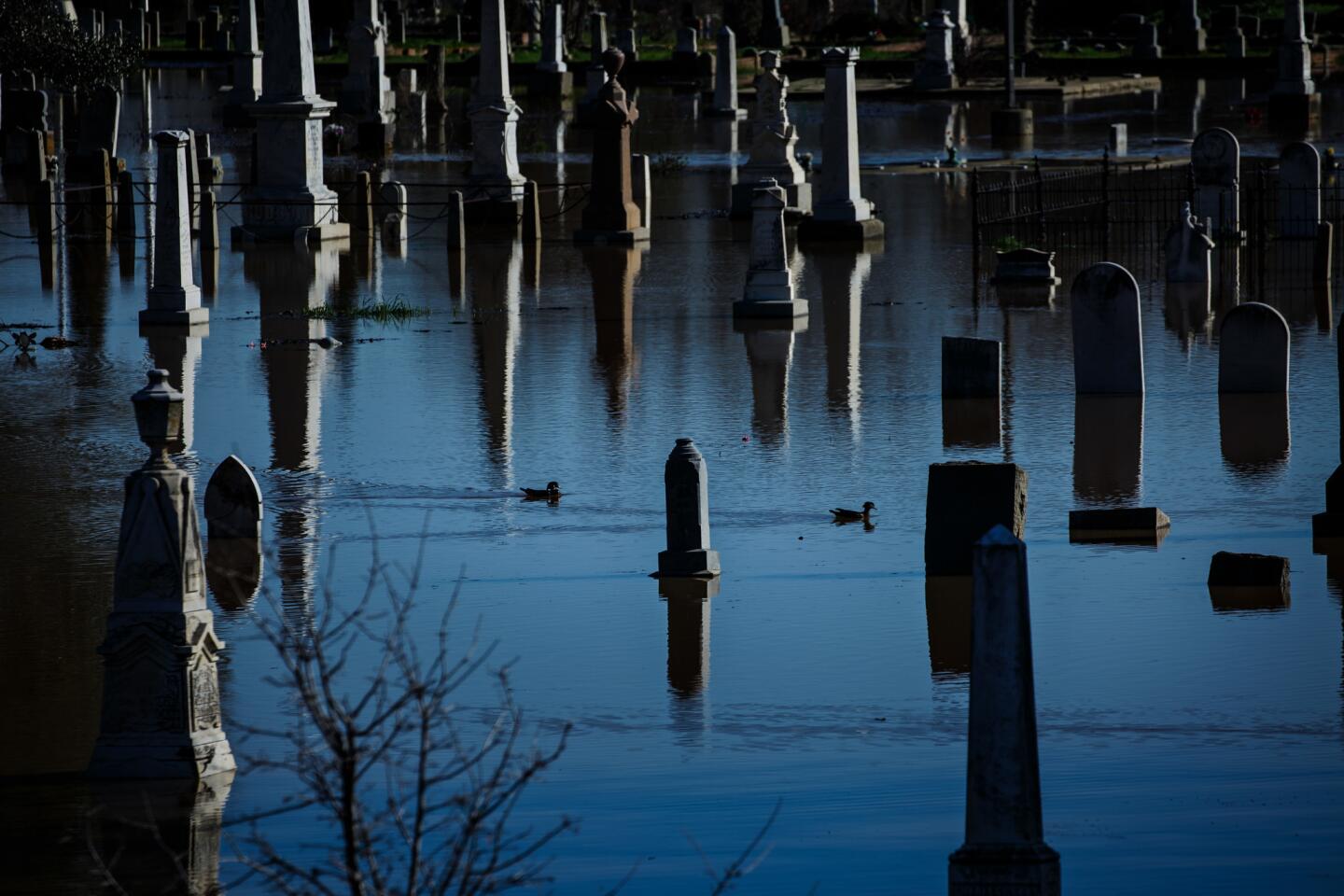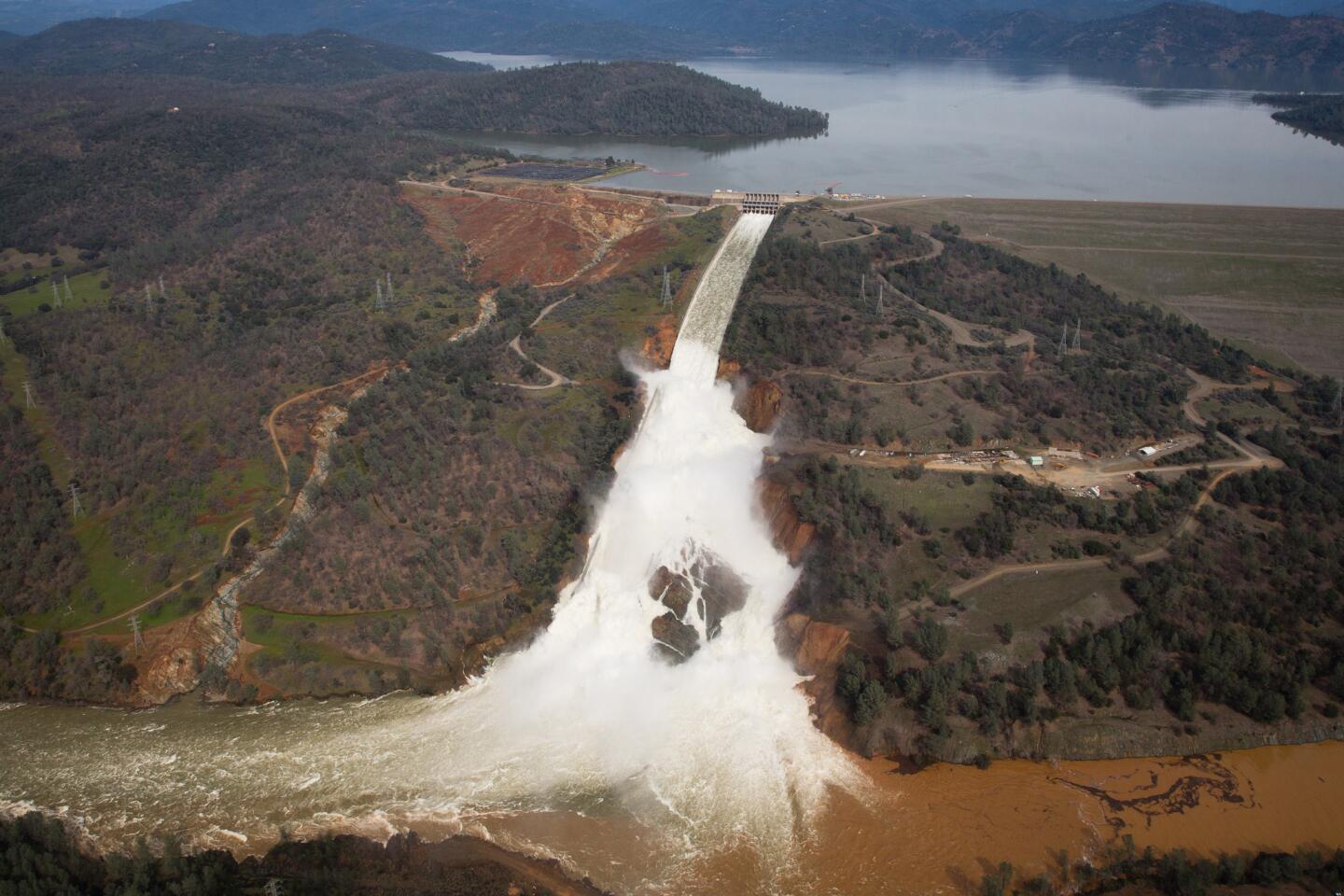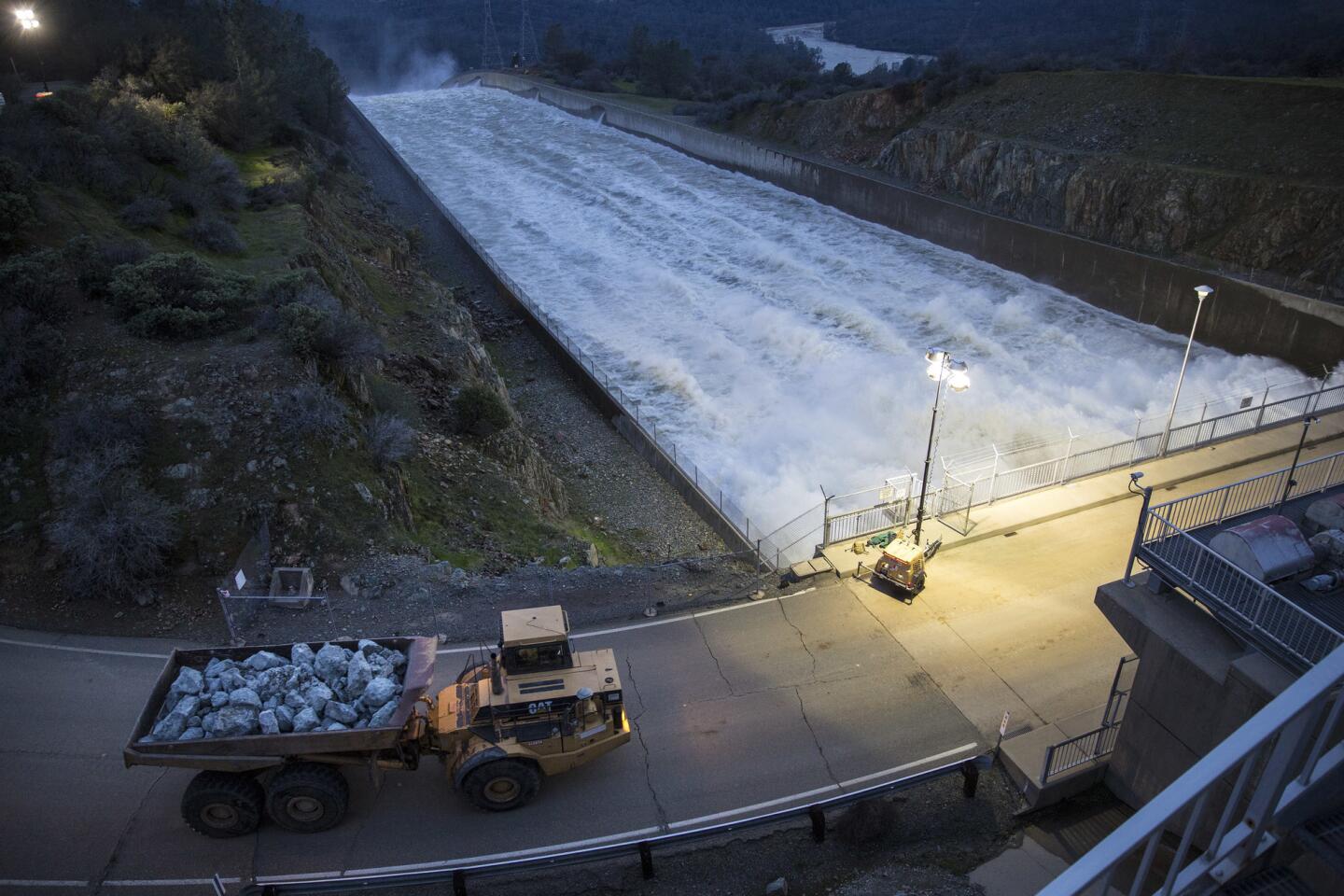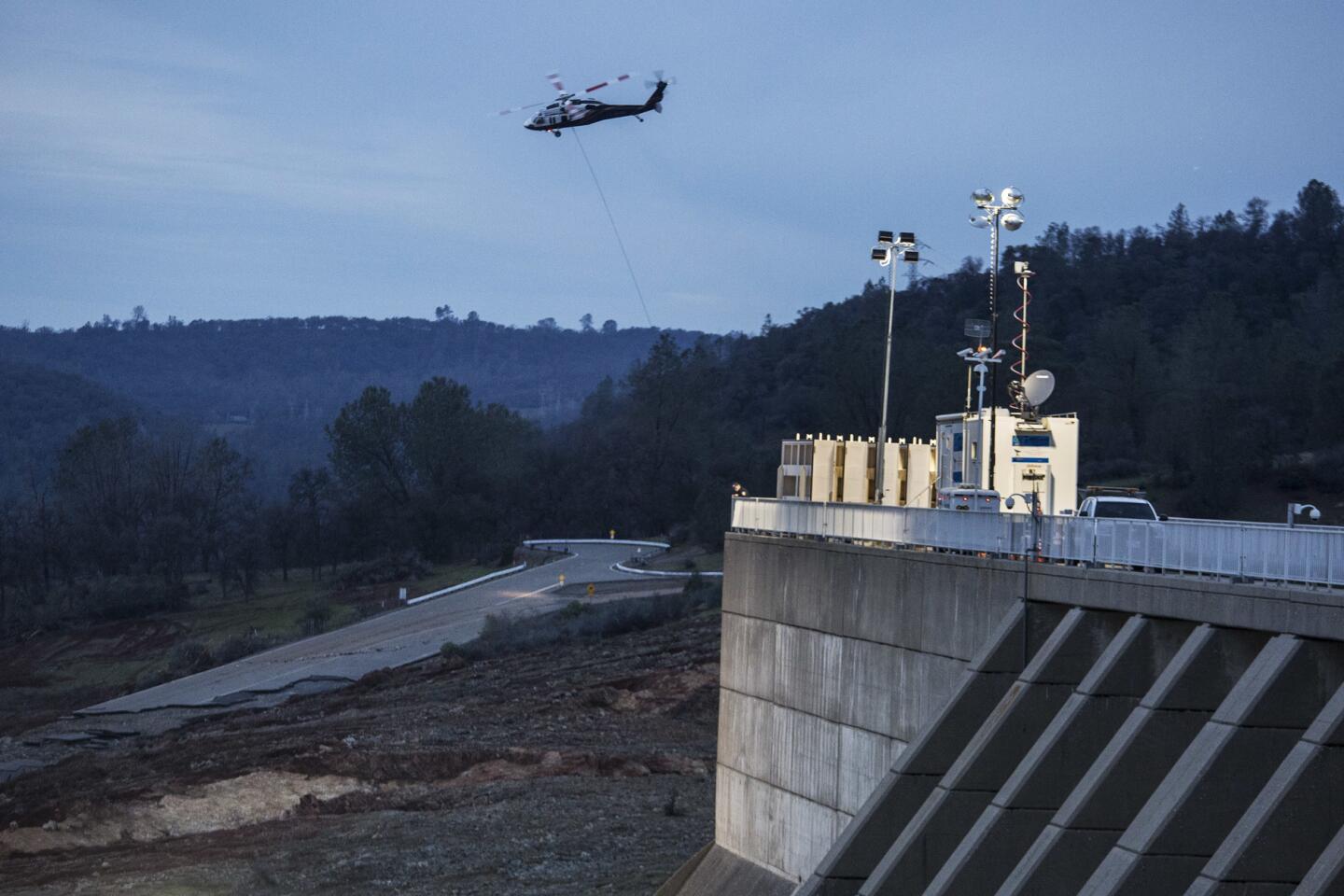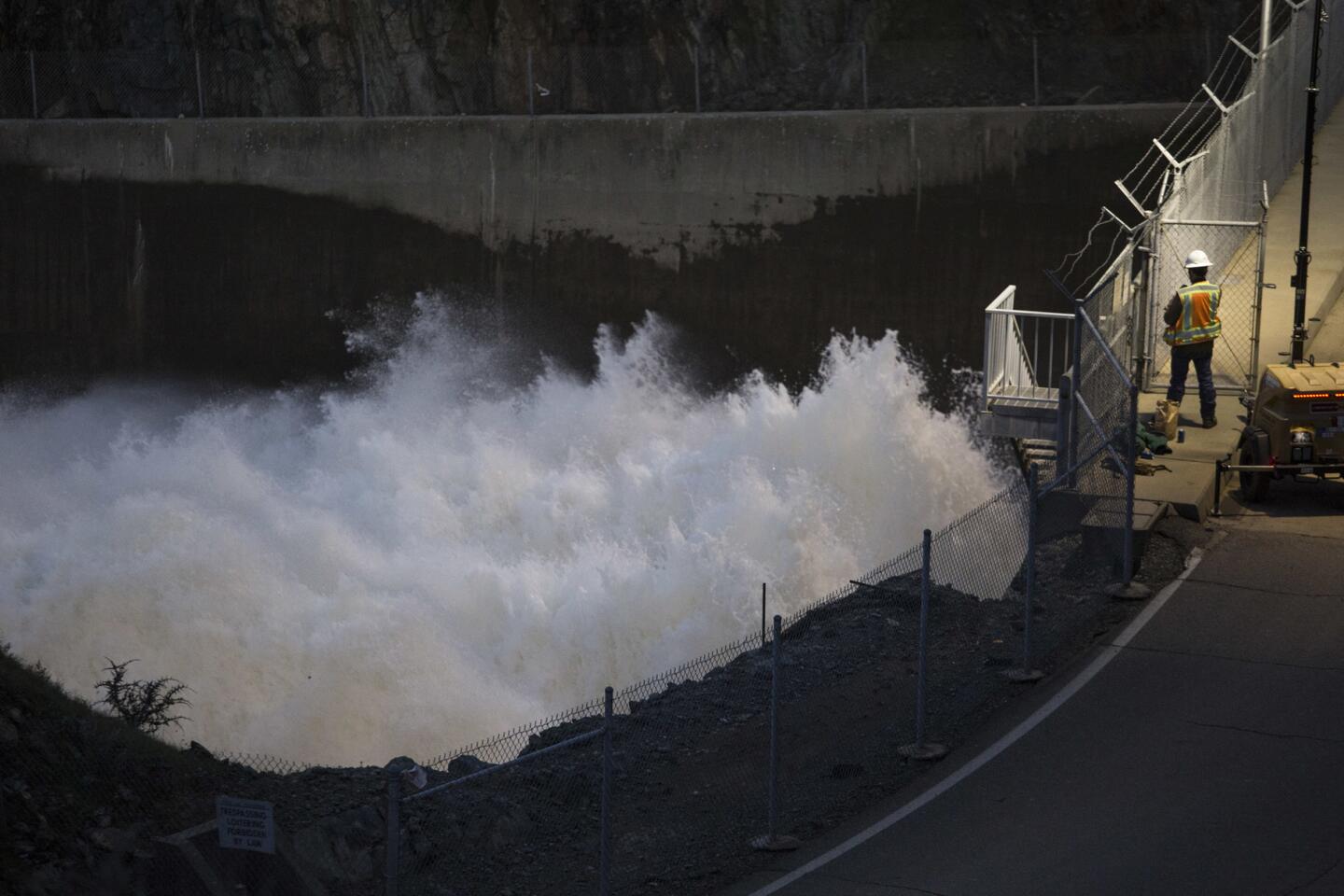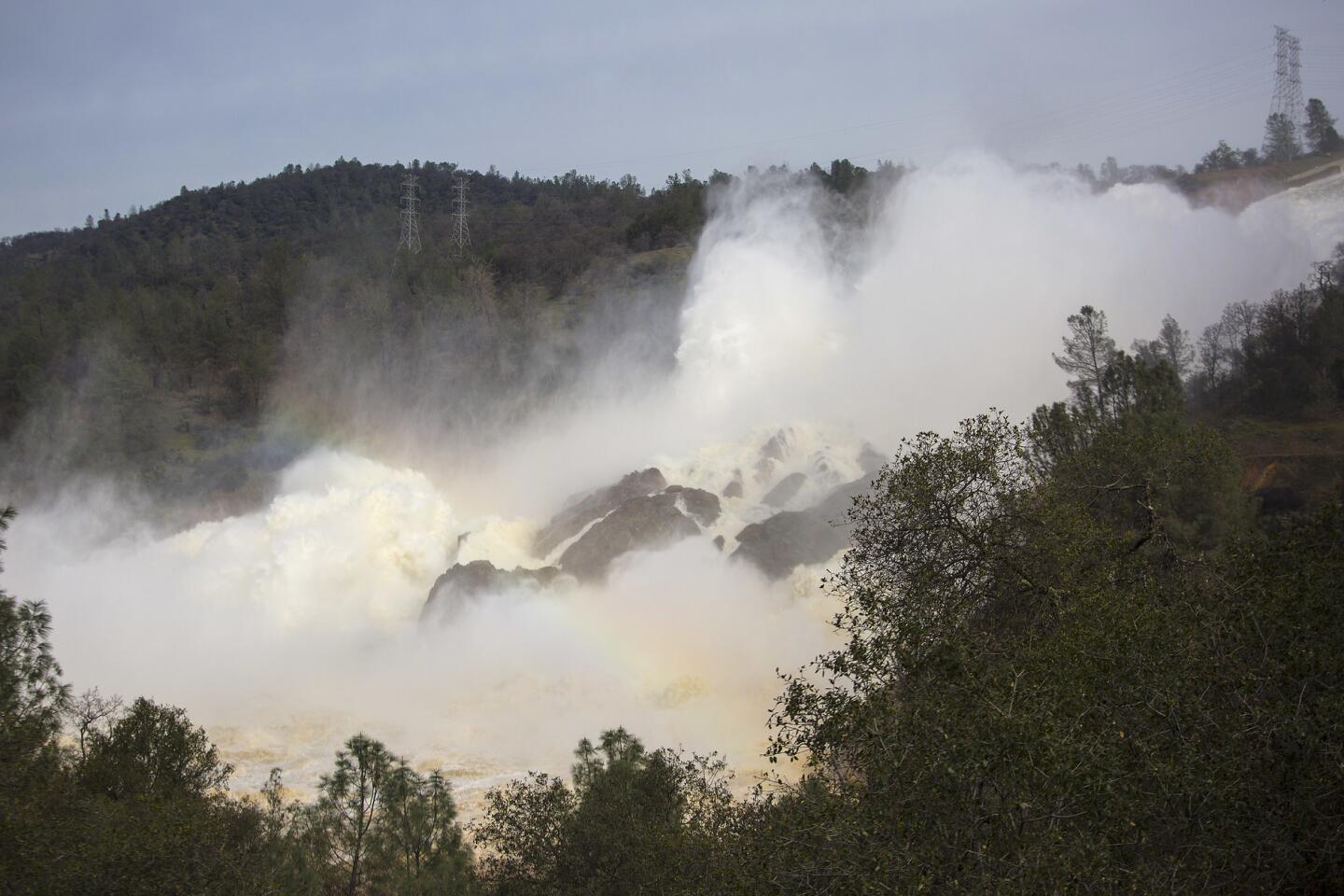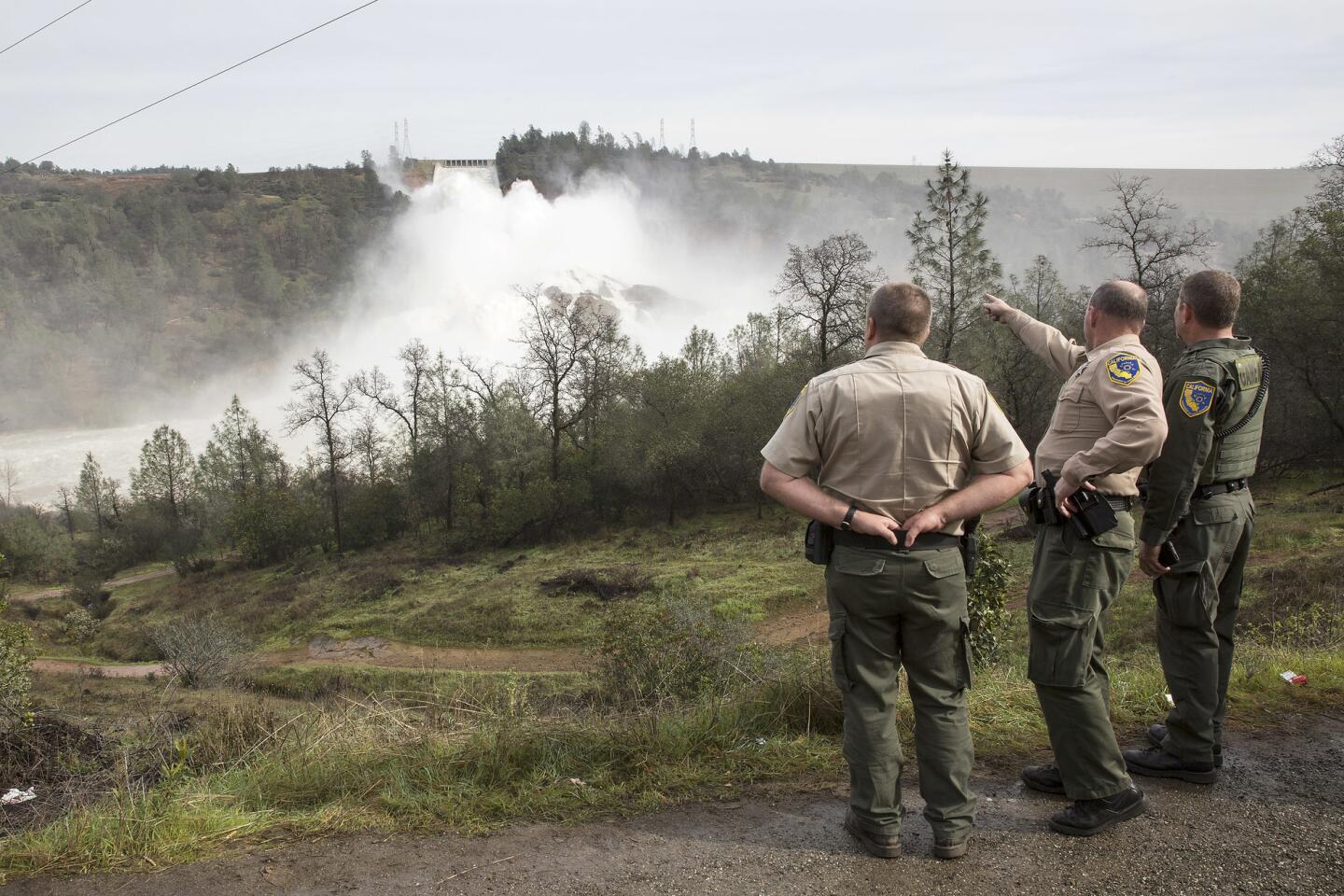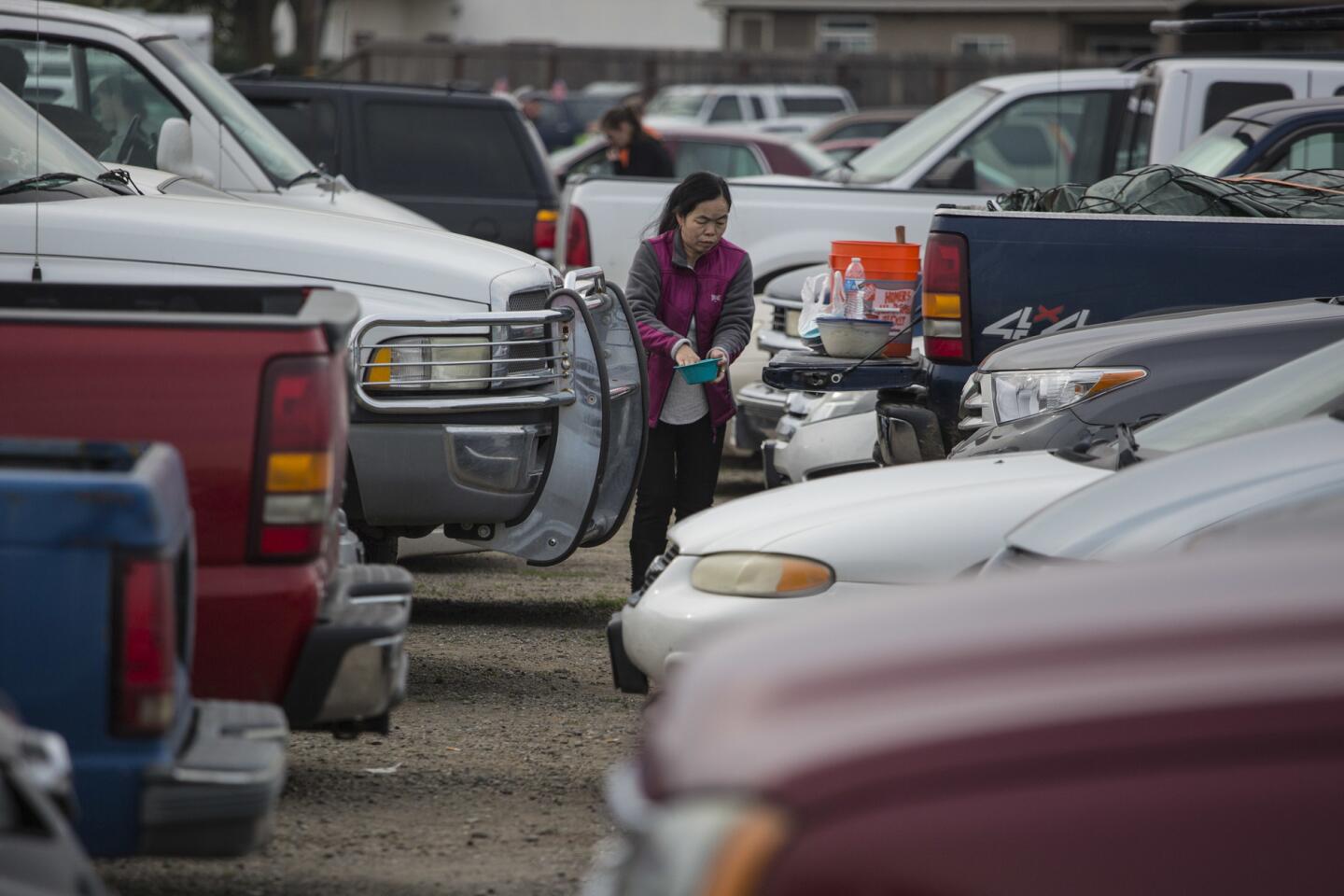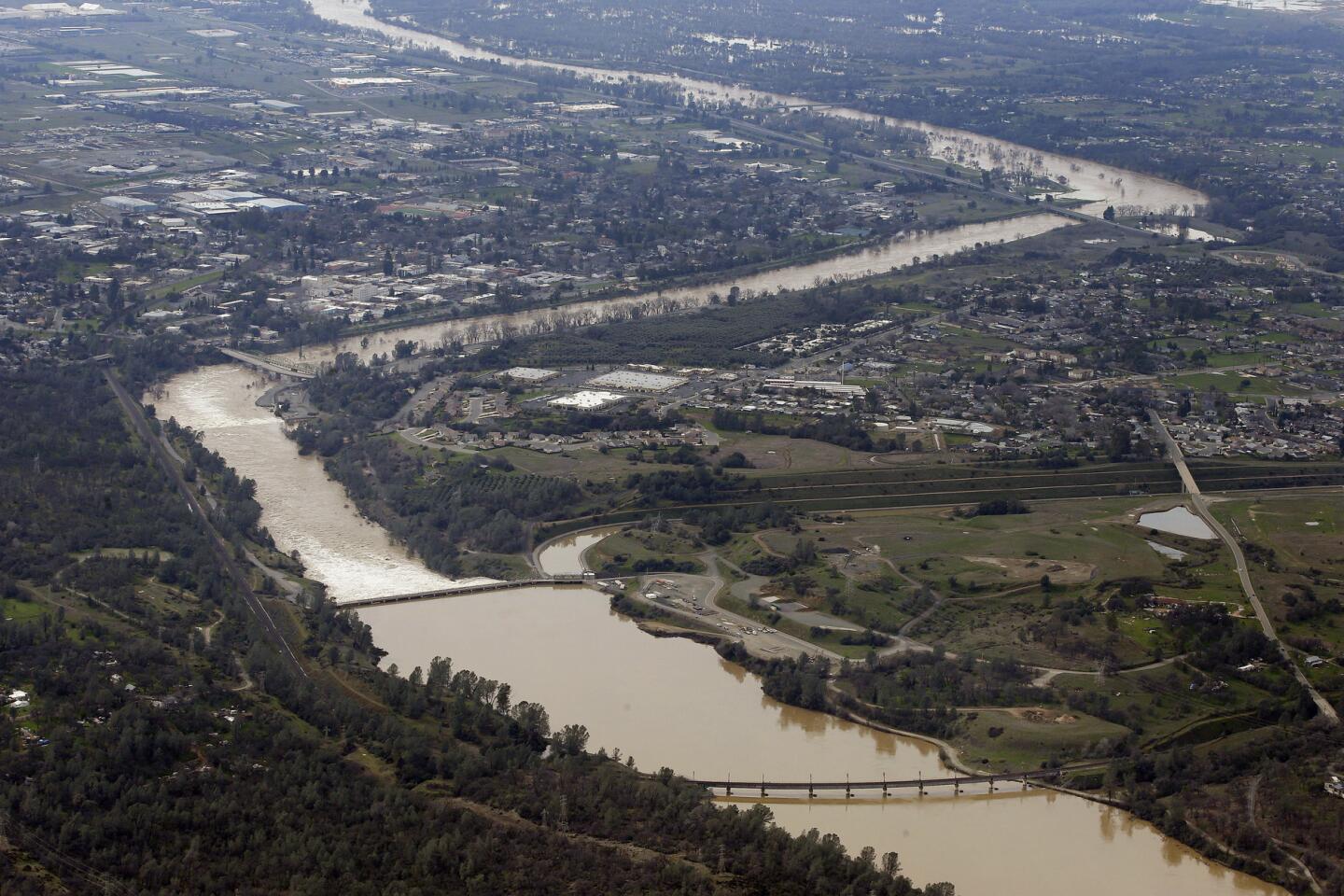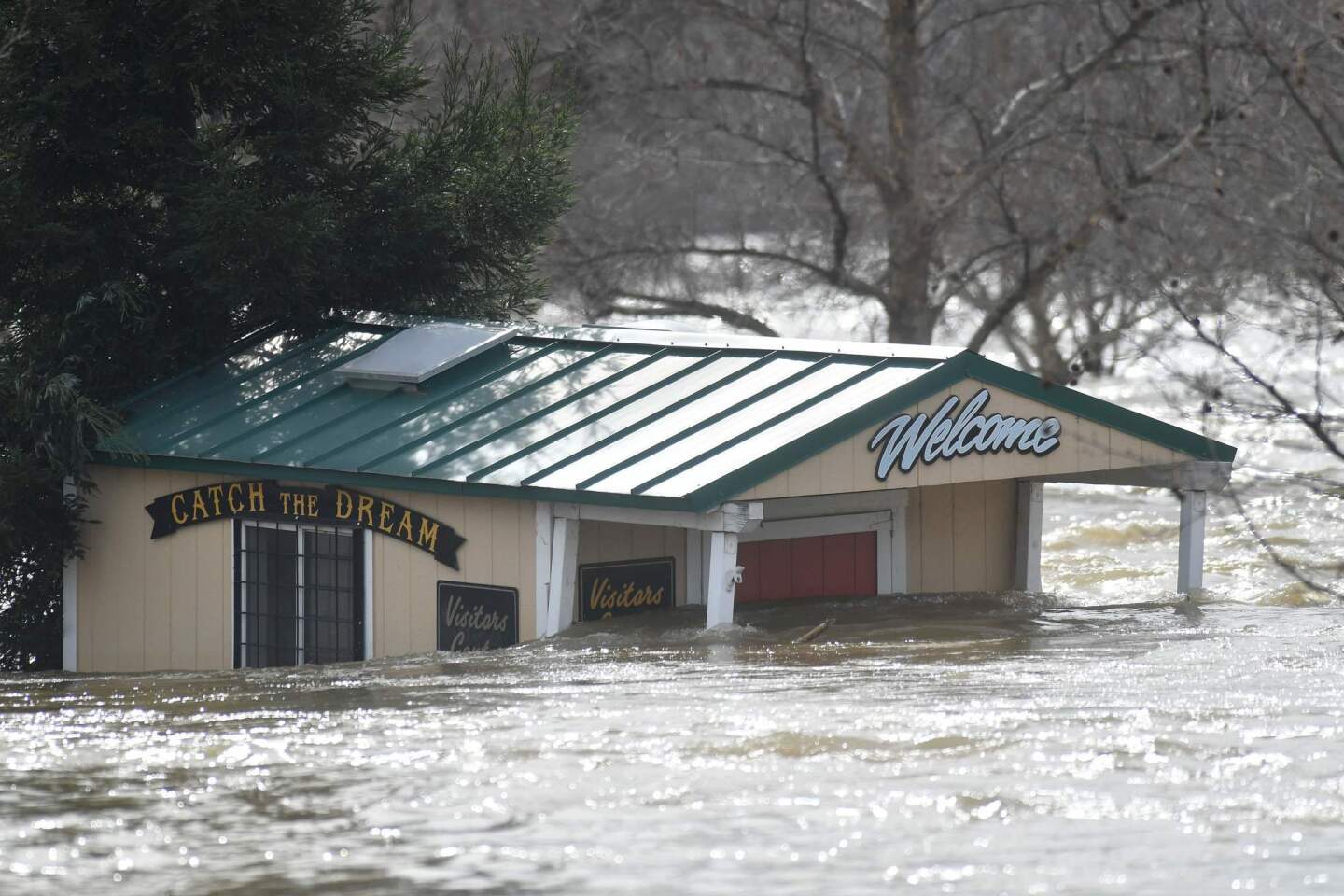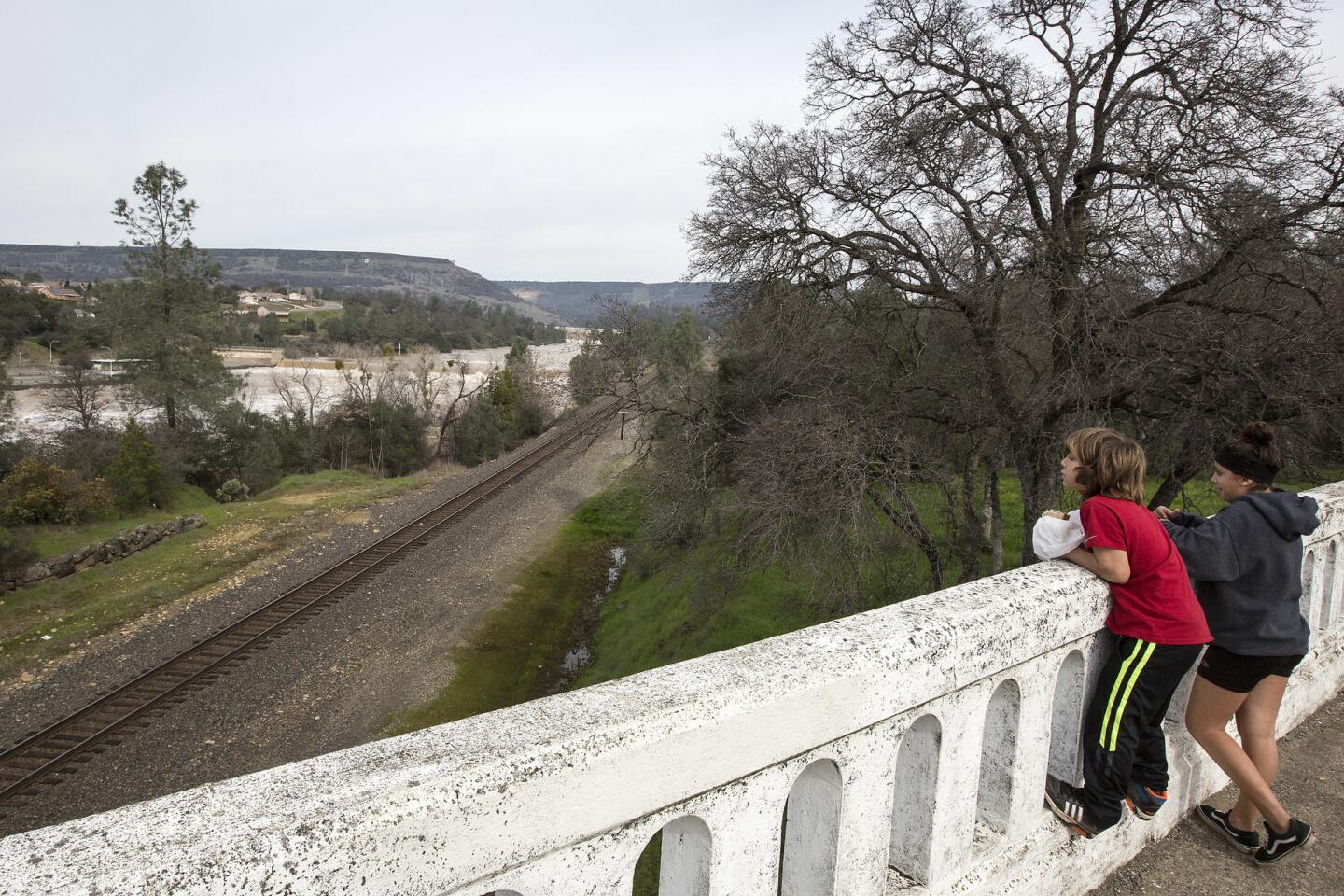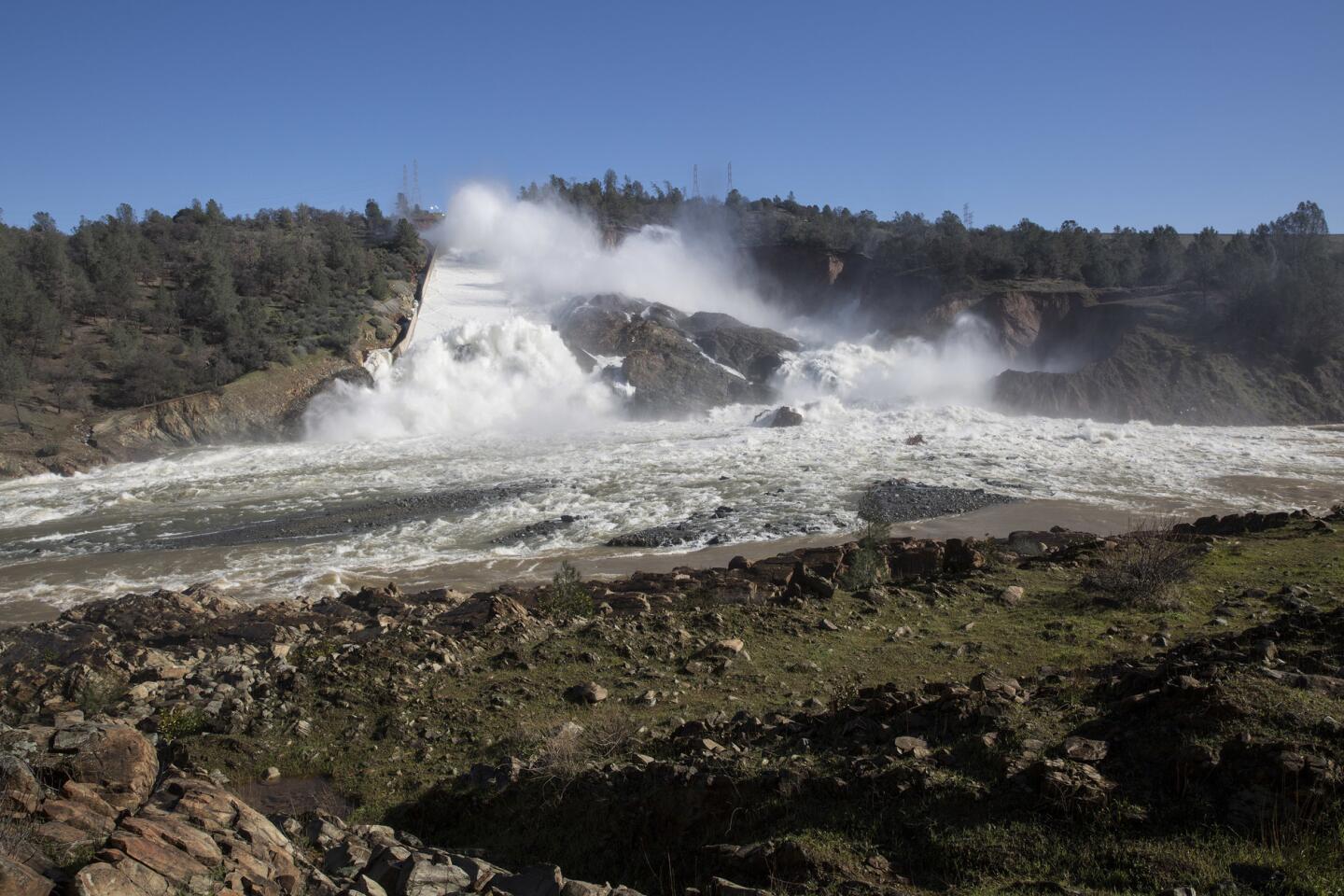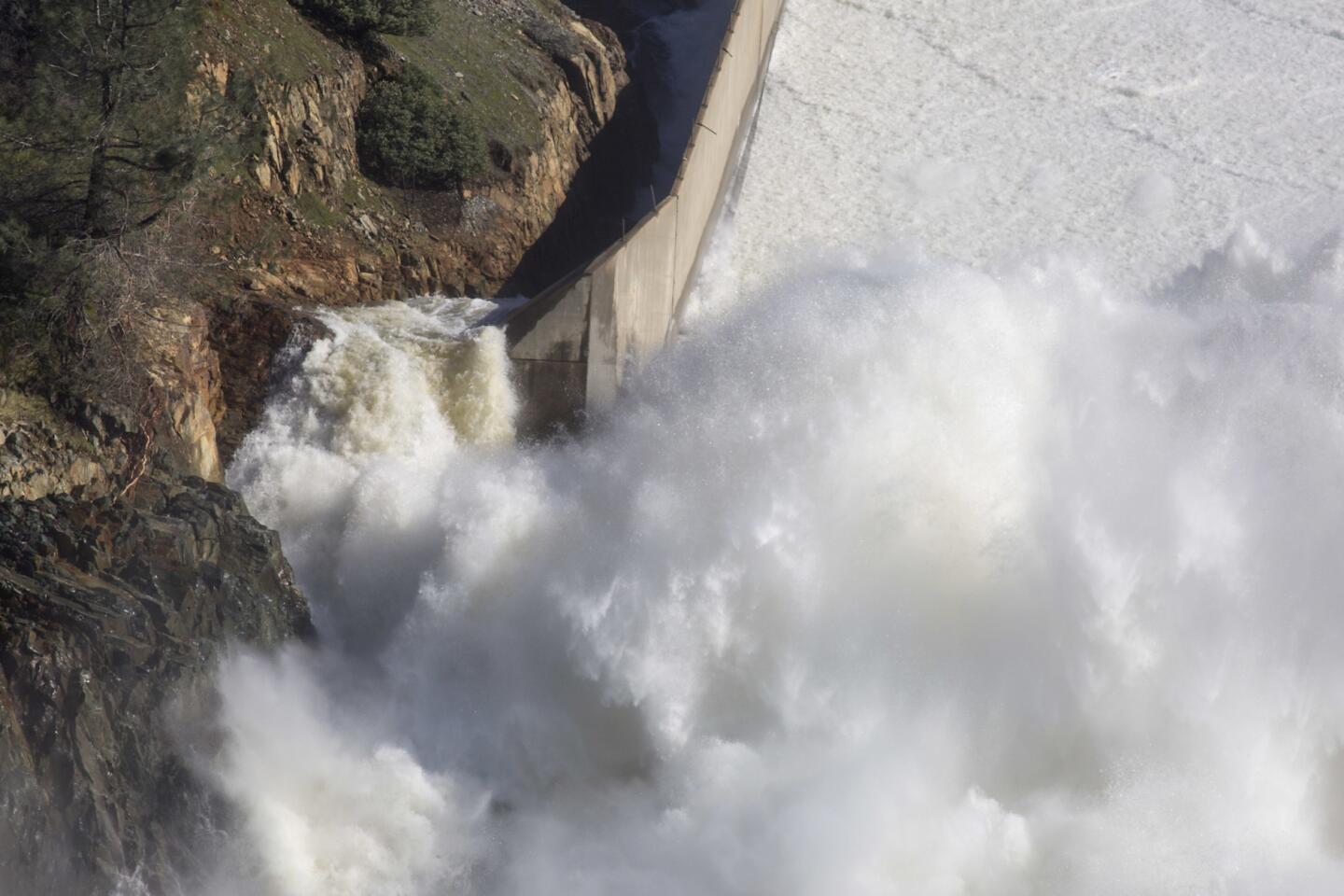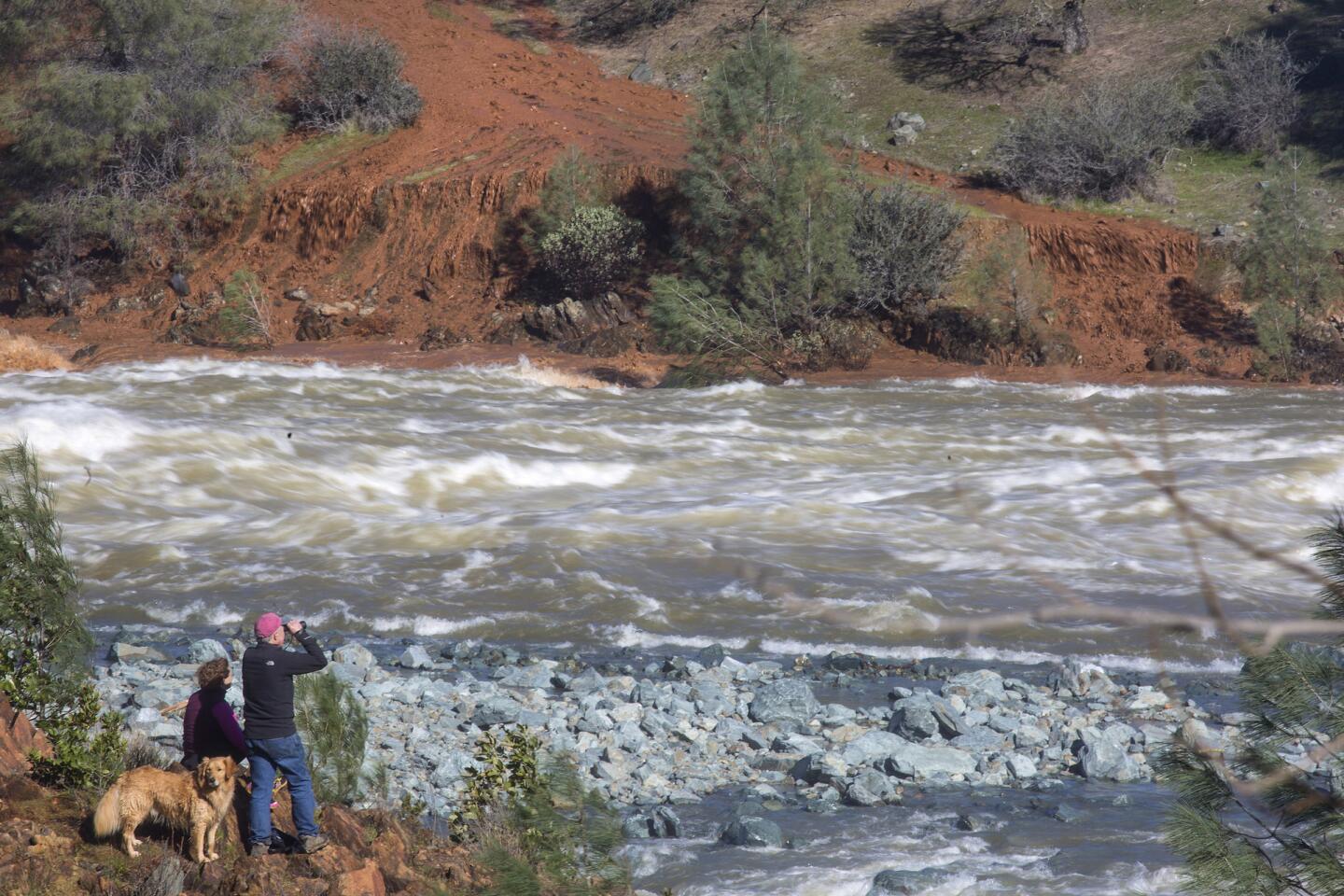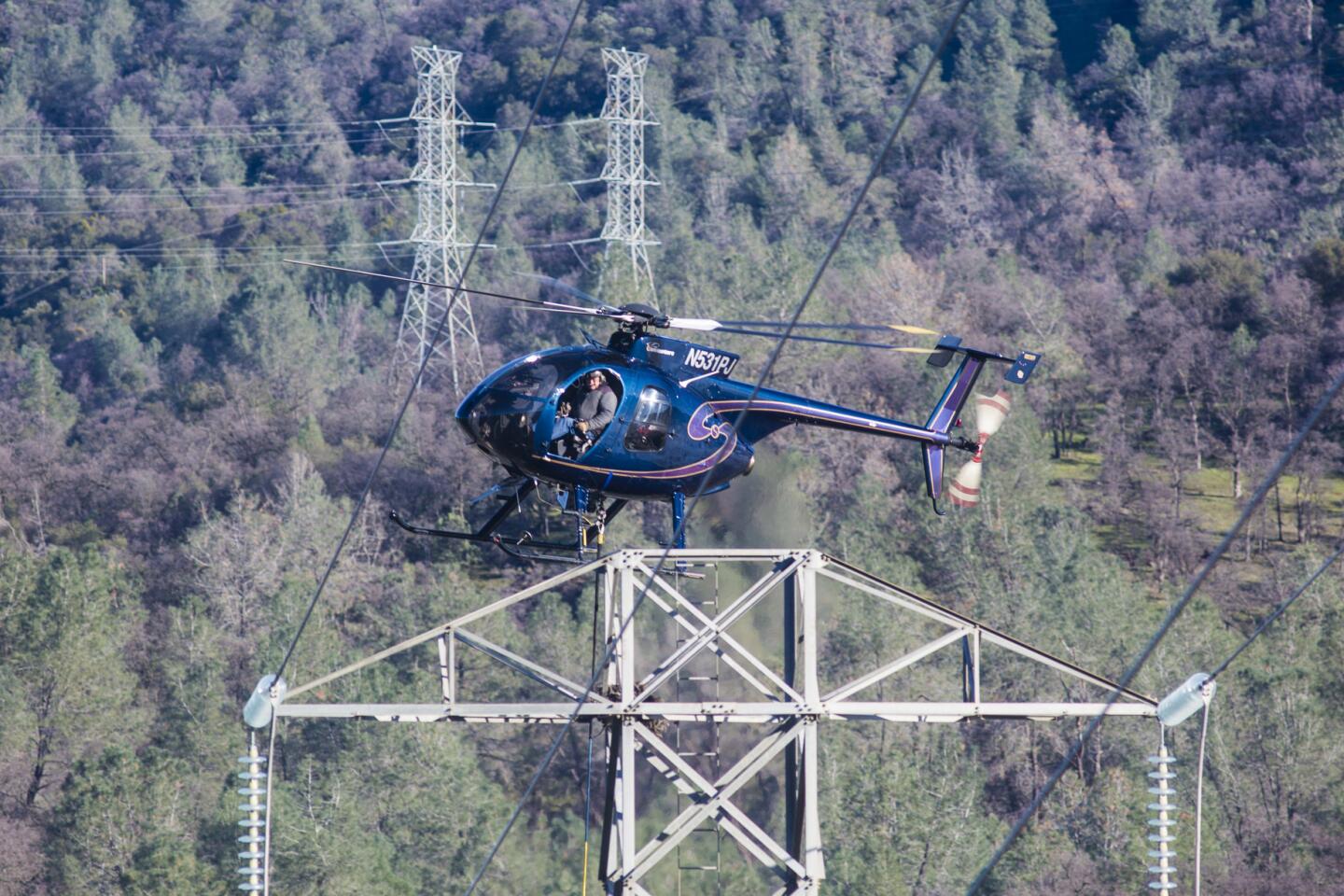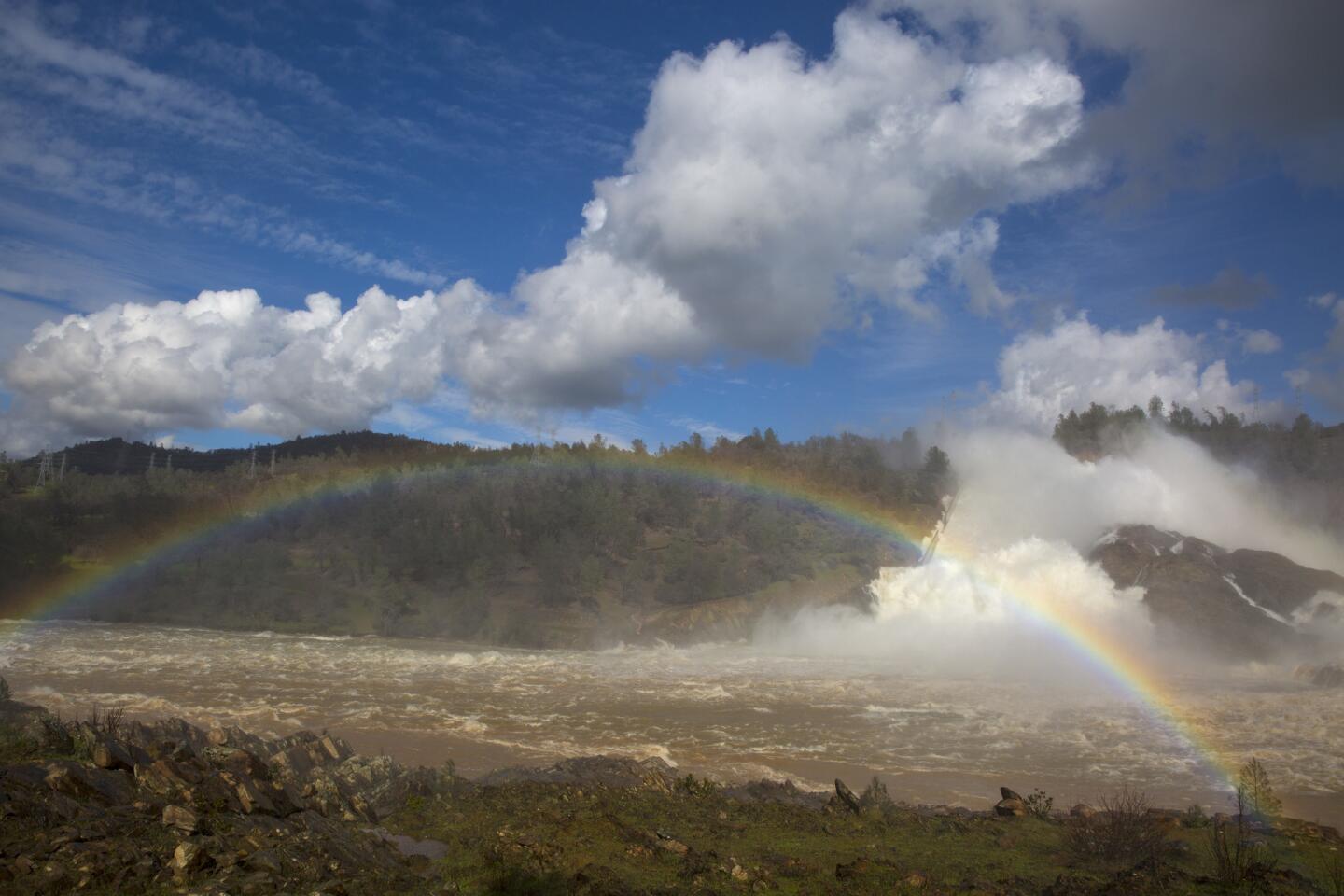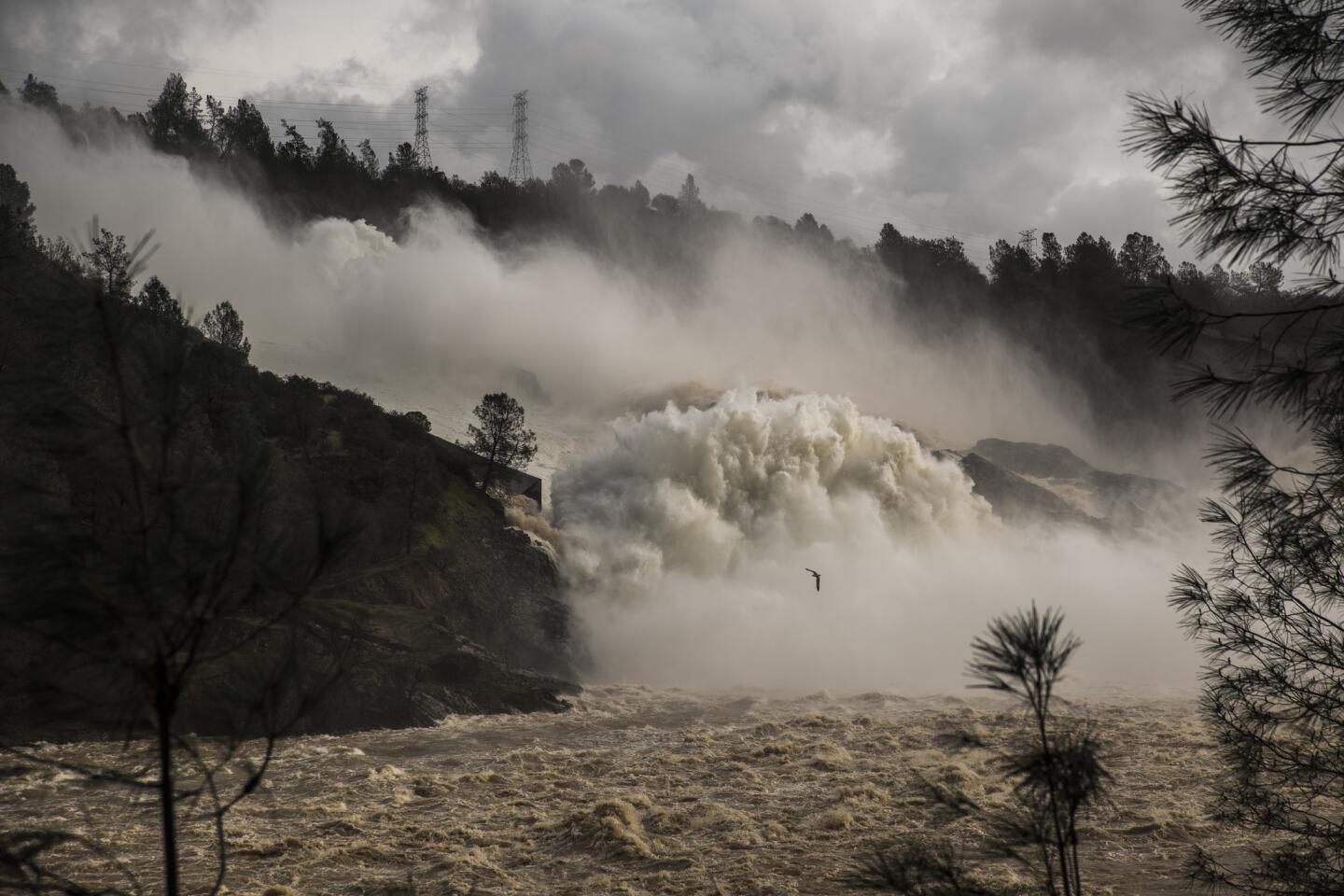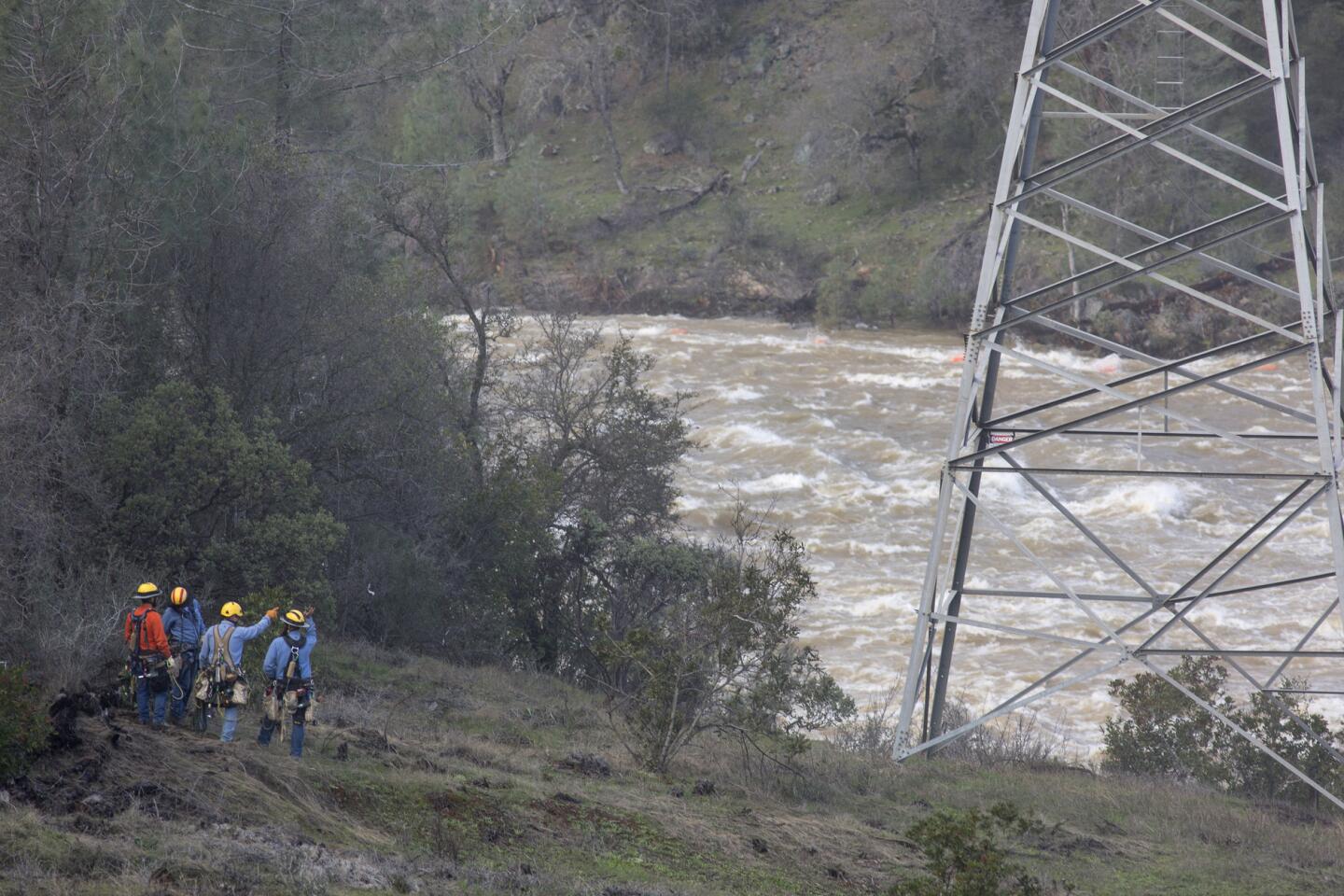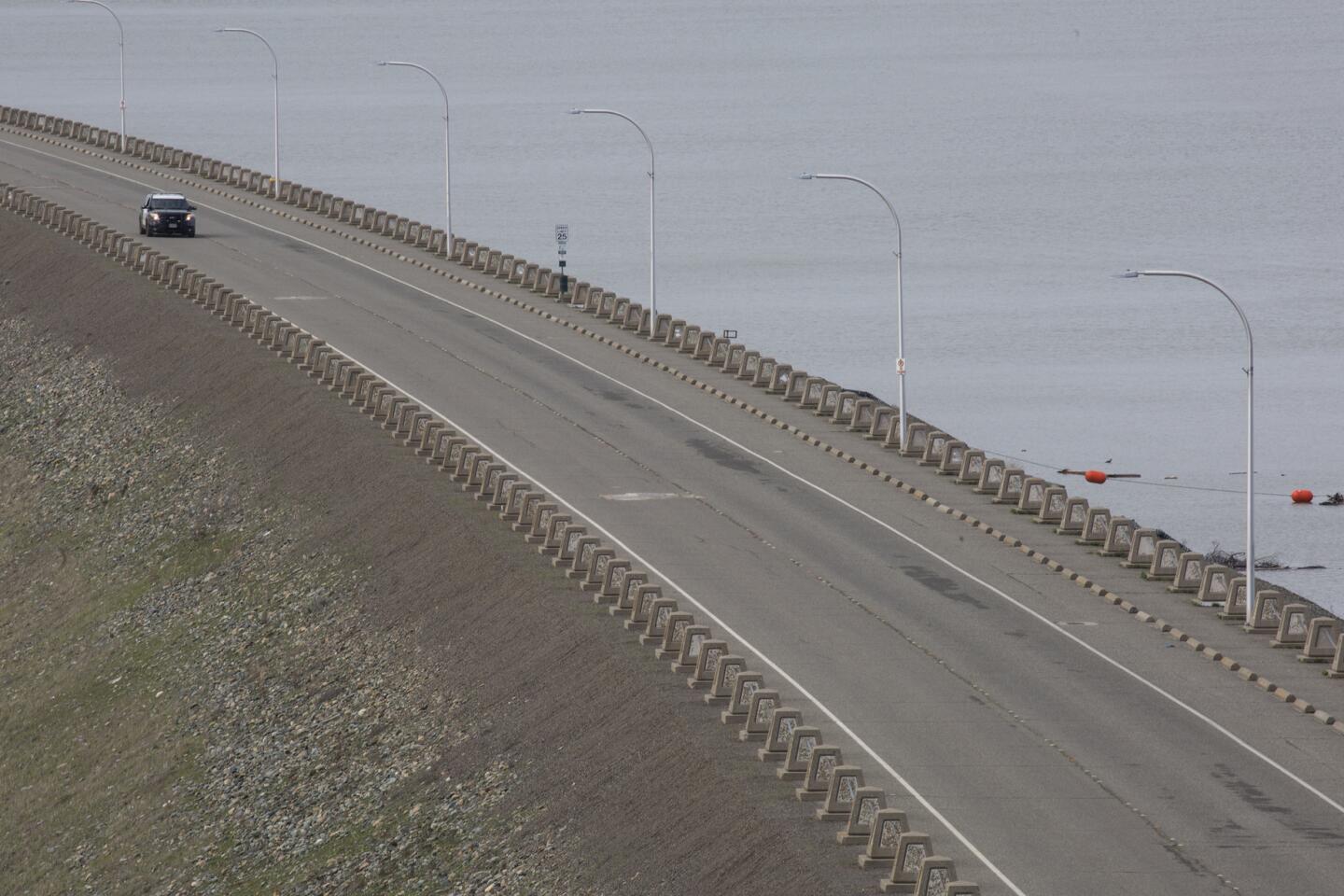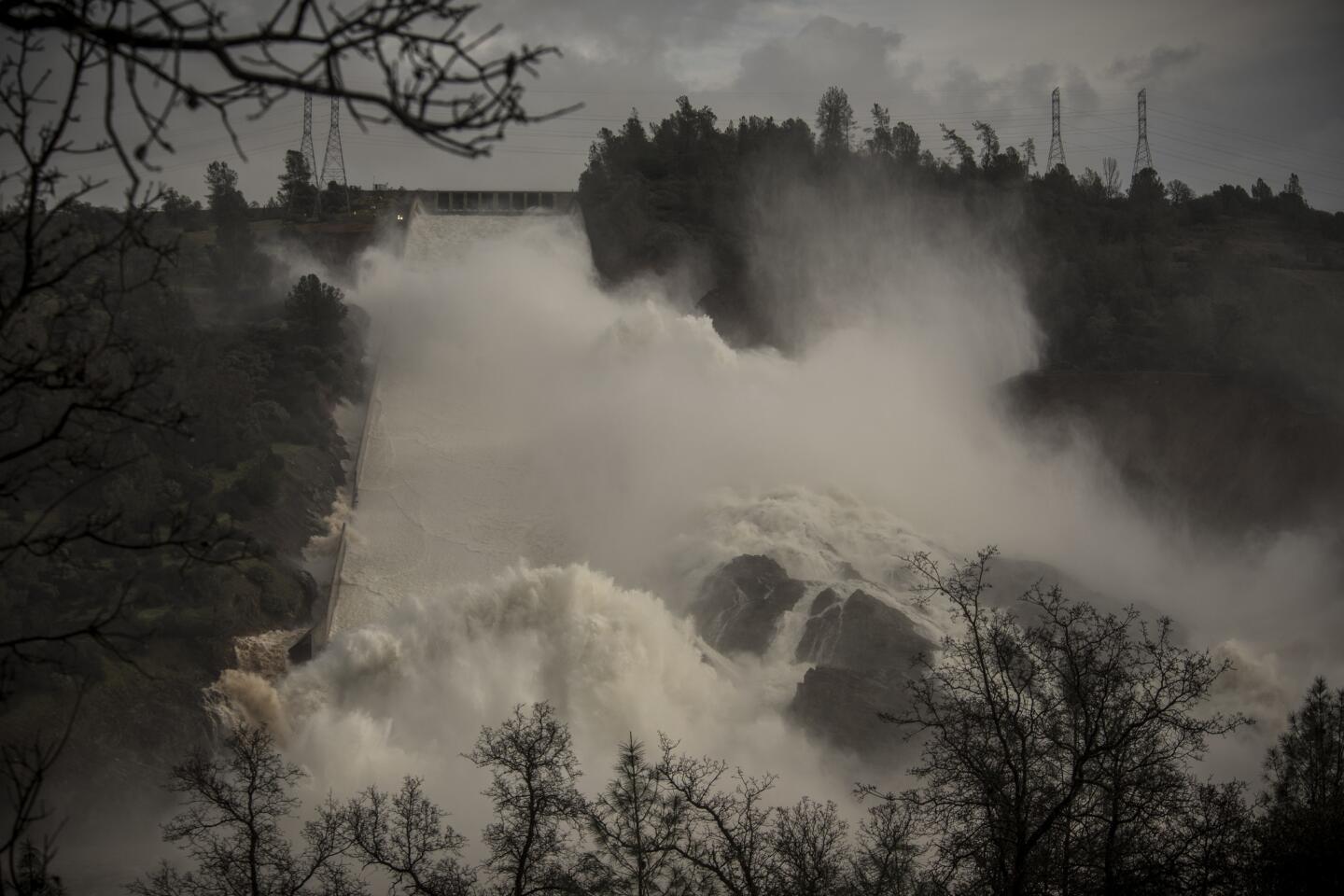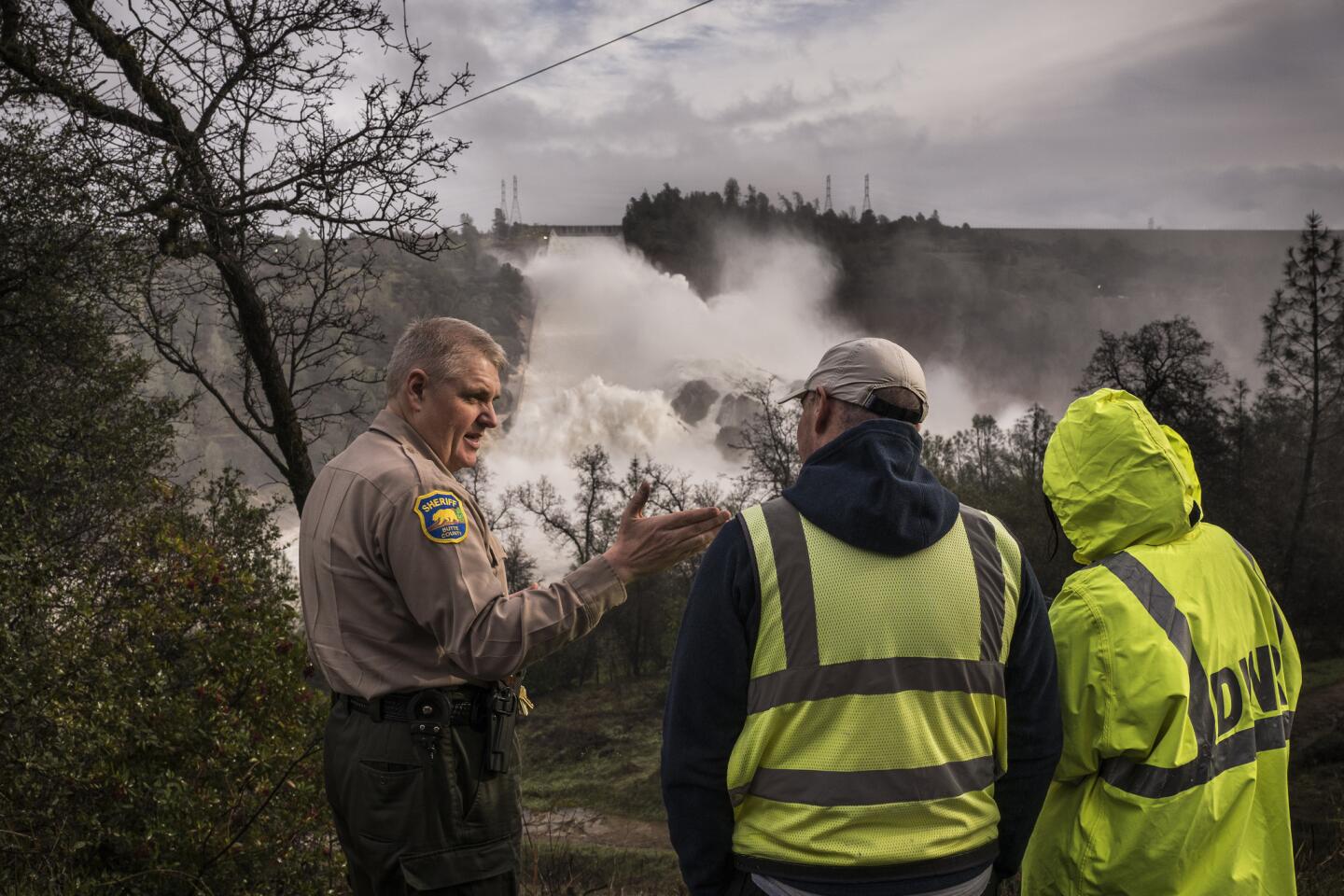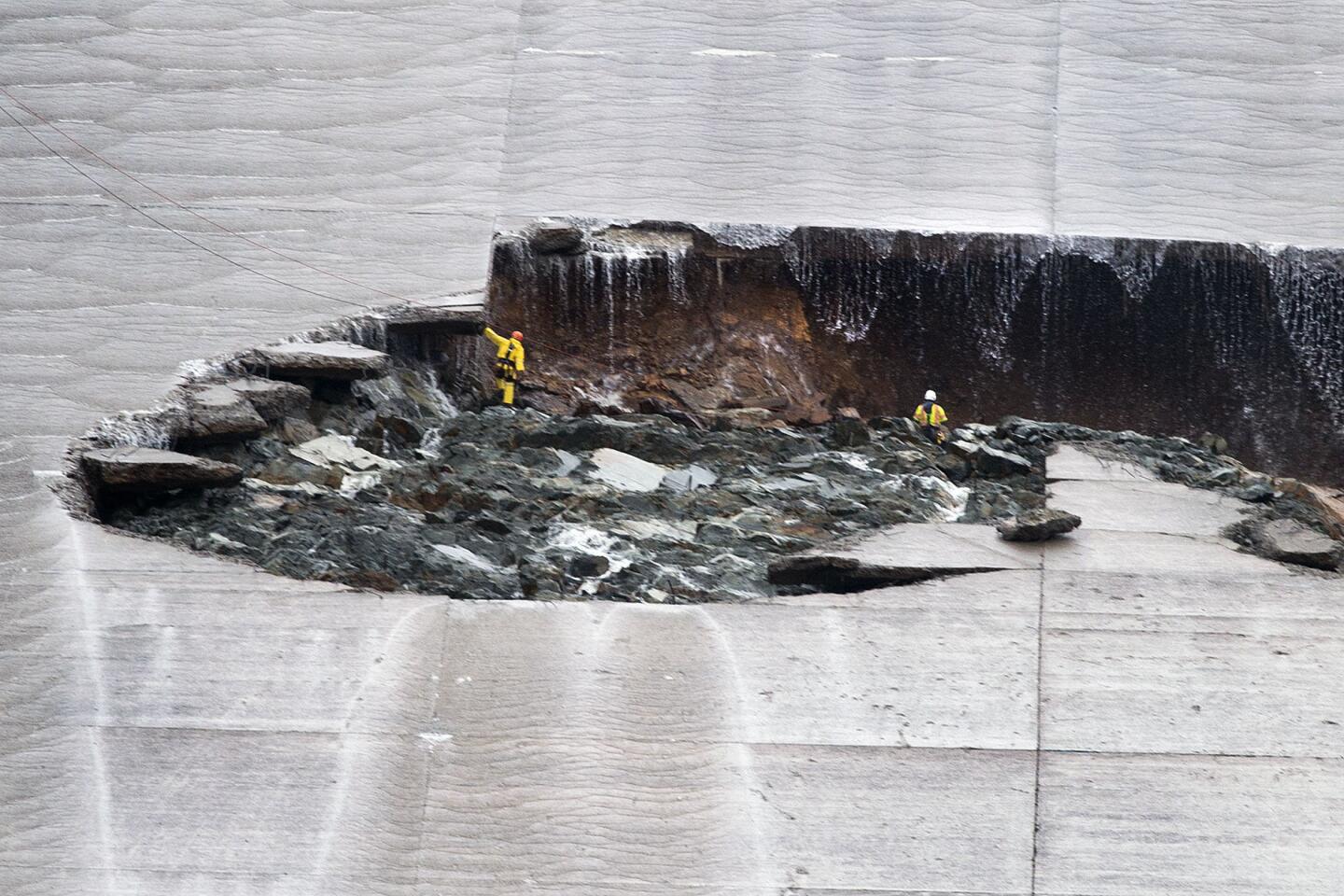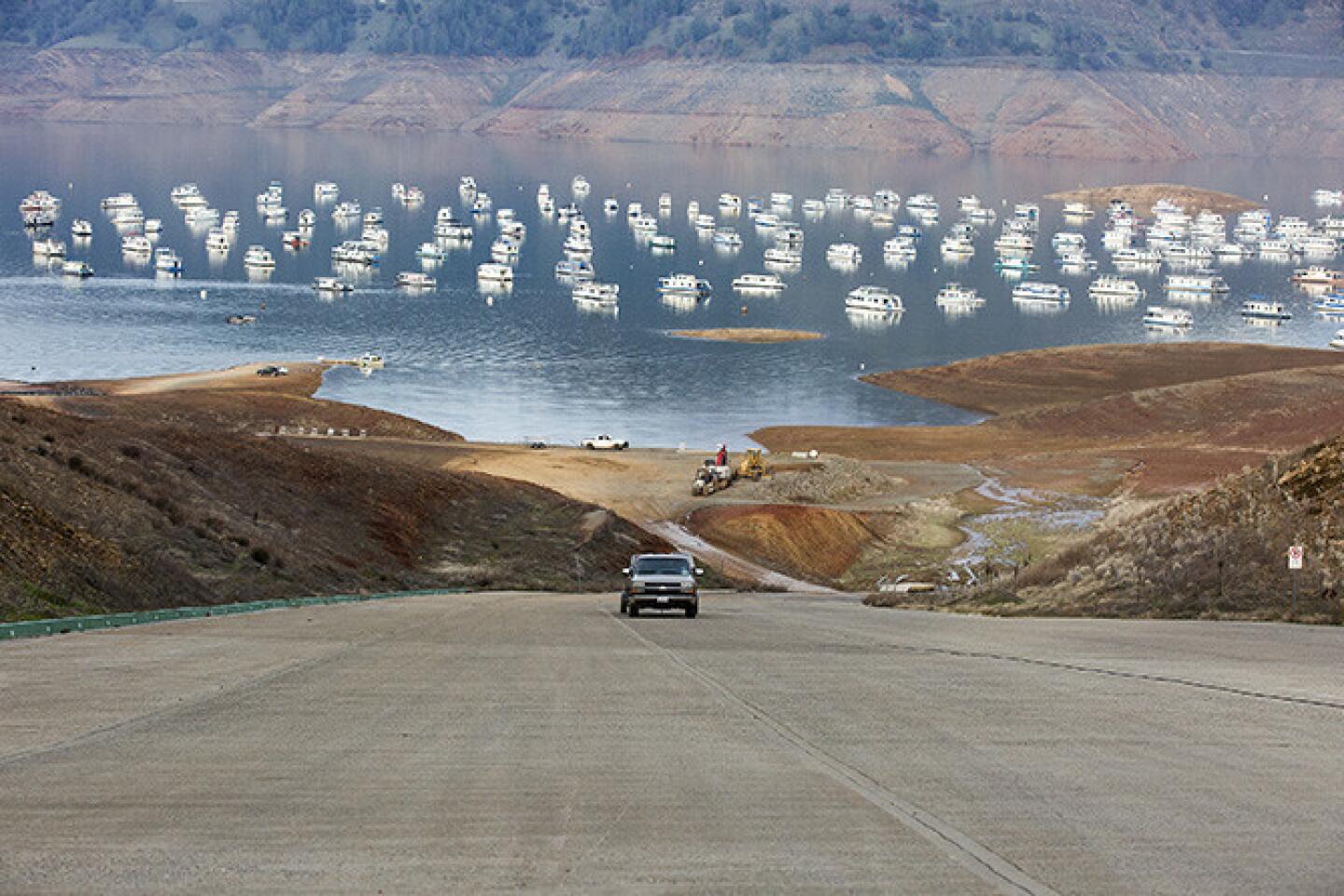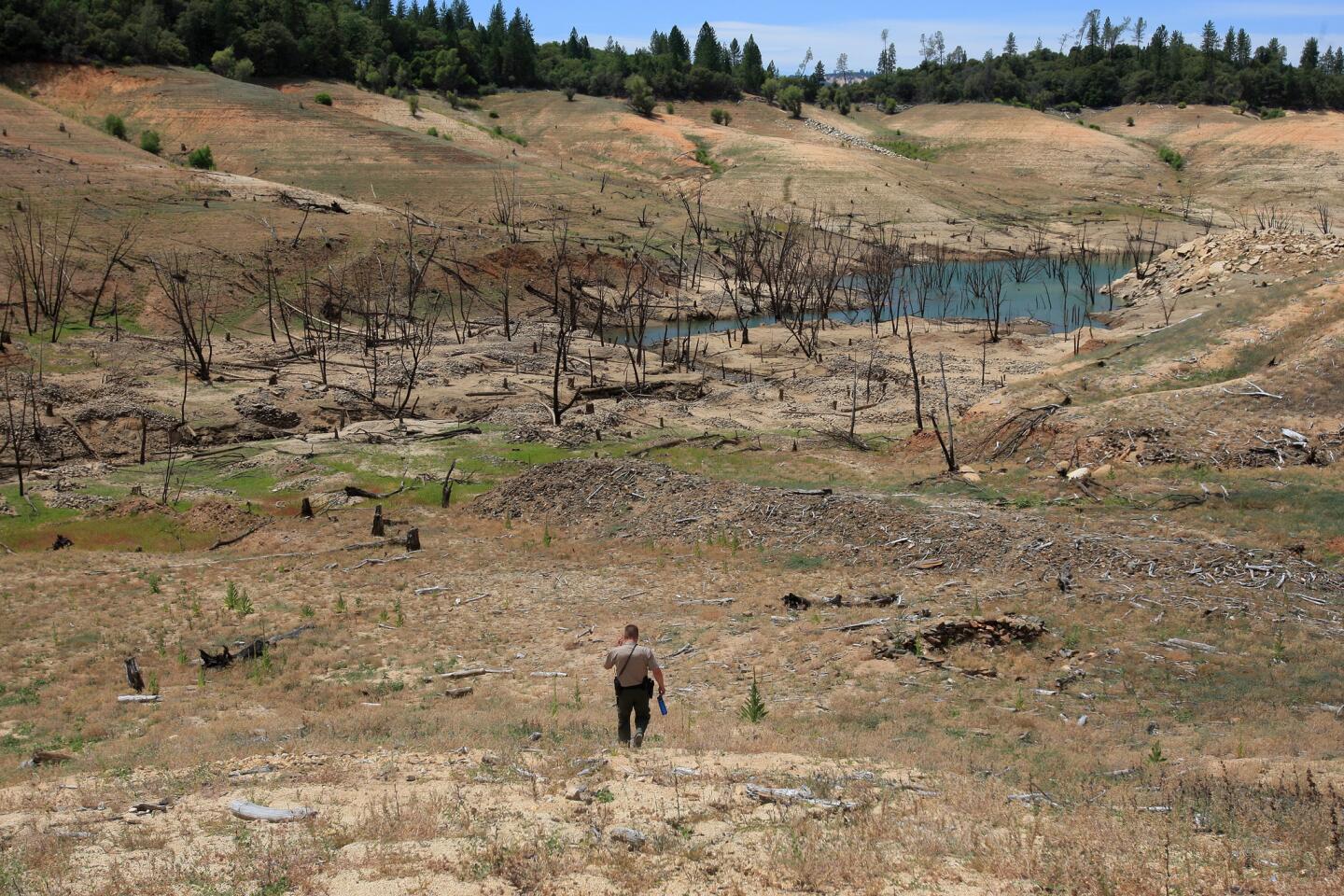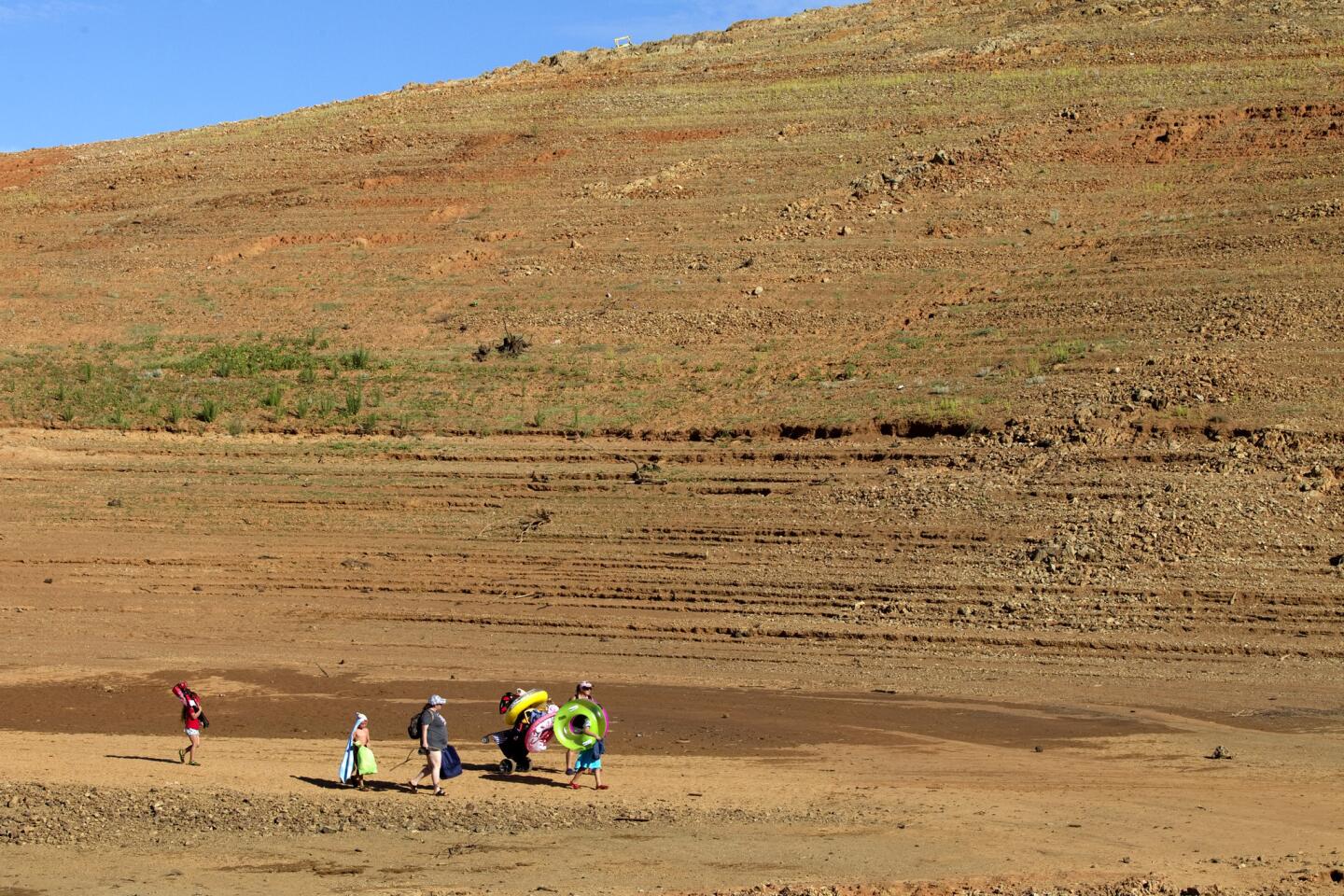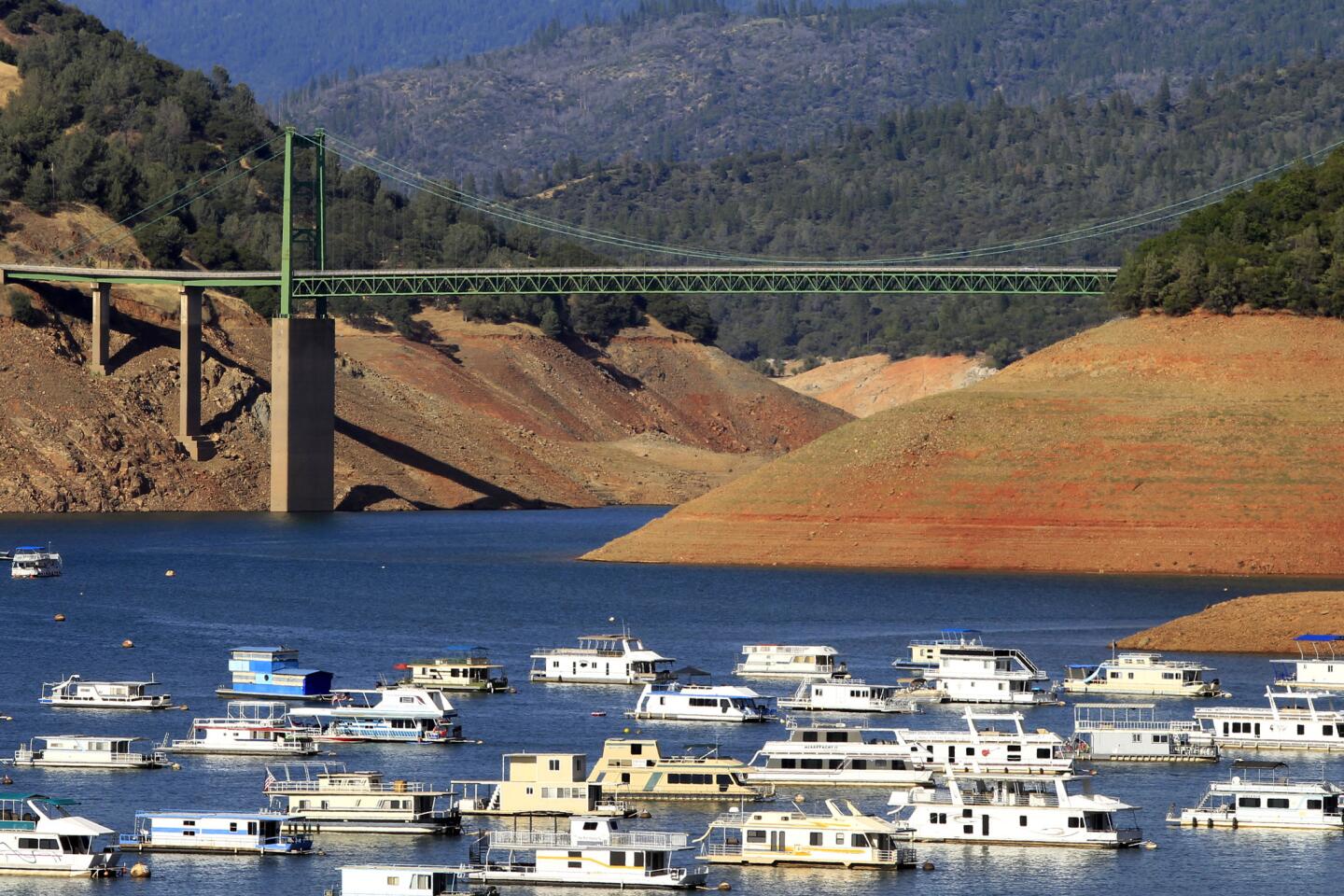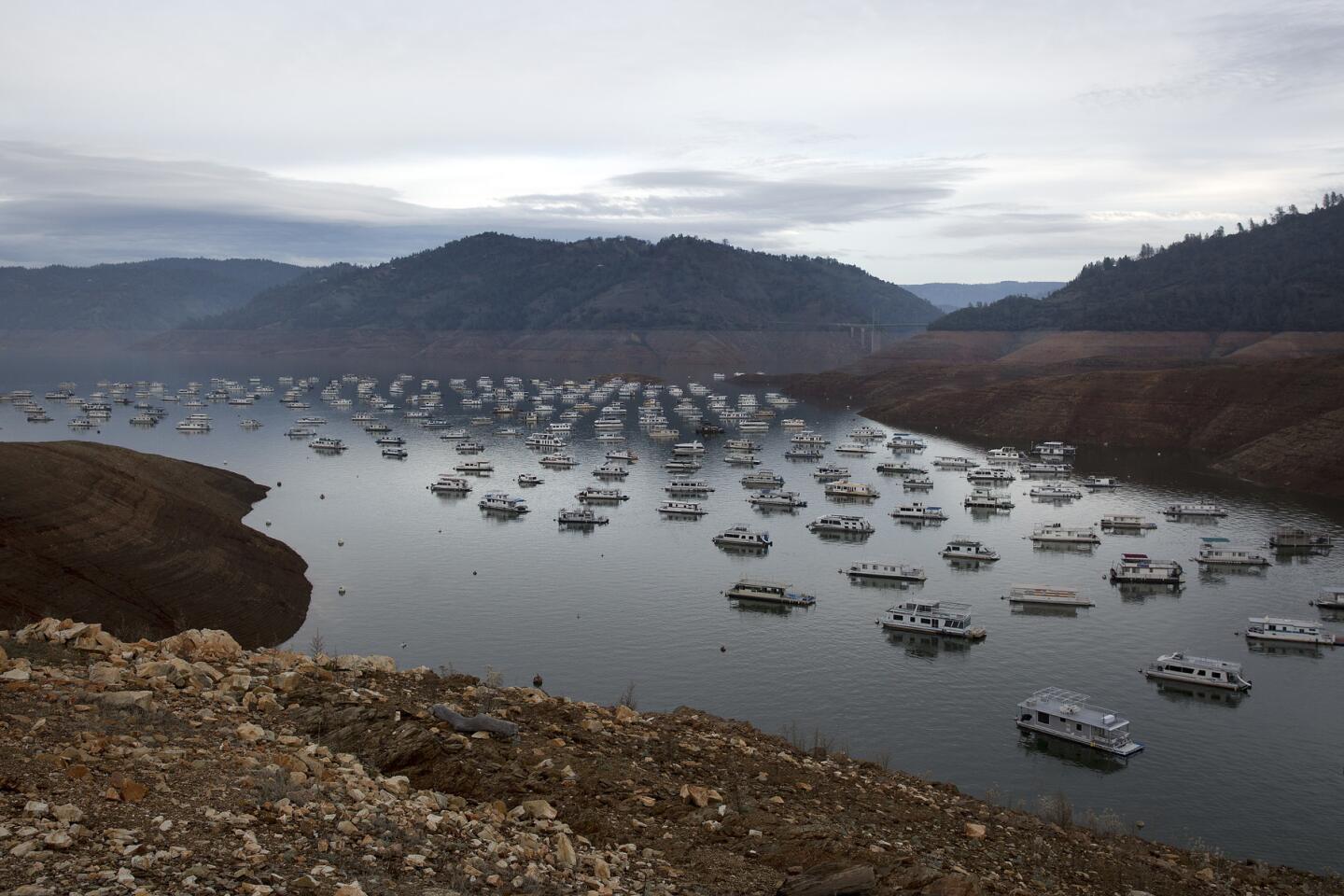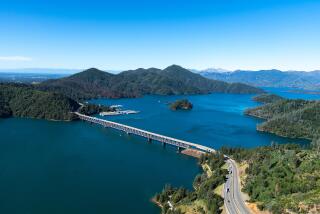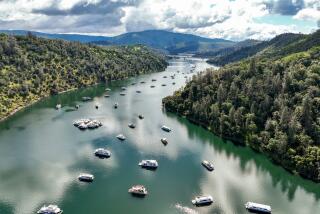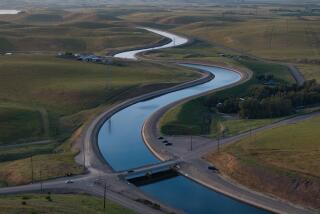Inside the frantic fight to protect Oroville dam, nation’s tallest, as spillway rapidly erodes
Oroville Dam is the center of California’s massive water project, which sends water collected from the Sierra Nevada north of Sacramento south to cities and farms.
It’s an epic engineering project that now faces a crisis.
For the record:
8:02 p.m. Nov. 15, 2024An earlier version of this story incorrectly listed the height of Oroville Dam as 7,700 feet. It is 770 feet tall.
What is the problem?
Flow from heavy rains has damaged the reservoir’s spillway, creating dramatic scenes of muddy torrents gushing over a concrete chute marred by a massive sinkhole.
Officials have stressed that the dam itself suffered no damage and that the spillway problems don’t pose a imminent threat to the public. Still, they have been frantically working to reduce the amount of water in the Lake Oroville reservoir, which is near capacity. It’s now at about 96% of capacity, and more water has been flowing in than is draining out.
If the reservoir exceeds capacity, it could damage the dam. Officials plan to avoid that, if necessary, by using an emergency spillway to release water. It’s unclear whether they will have to do that.
What are the contingencies?
The emergency spillway has never been used since the dam was completed in 1968.
Crews were clearing trees and brush from the emergency pathway Thursday. The state also moved a couple of million fish out of the downstream Feather River Hatchery because water from the eroded spillway is too muddy for hatchery use.
Right now, they continue to use the damaged spillway.
Why is Oroville Dam such an important part of the state’s water works?
The dam is the tallest in the United States, exceeding even Hoover Dam. It stands 770 feet, 44 feet taller than Hoover. Lake Oroville is the second-largest reservoir in the state, behind Shasta Lake, which is the center of the federal water project that serves California.
The lake takes in water from the major branches of the mighty Feather River.

If the state keeps sending water down the spillway, it will worsen the damage. (Feb. 9, 2017)
What caused the situation?
Northern California has seen the wettest rain season in years. And that has sent huge amounts of water into Lake Oroville. Data show water levels for this time of year have not been this high in decades.
Wasn’t Lake Oroville recently a poster child for the drought?
Yes. During five years of severe drought, Lake Oroville’s water level plummeted. At one point, it was at only 33% of capacity.
ALSO
San Joaquin Valley continues to sink because of groundwater pumping, NASA says
High desert water treatment authority mismanaged millions in federal funds, audit says
Despite epic rain and snow, California keeps emergency drought restrictions in place
More to Read
Sign up for Essential California
The most important California stories and recommendations in your inbox every morning.
You may occasionally receive promotional content from the Los Angeles Times.
